Pool Renovations
Make a Splash p.22



Pool Renovations
Make a Splash p.22


By leveraging social media, trunk shows, and microsites, Forsyth CC’s Pro Shop is driving revenue and member engagement, setting the pace for the 2025 Model Clubs.
“creating
your club’s road map to best in class facilities”

“ We interviewed six different companies, both local and national firms. The field was reduced to two national companies and in the end we overwhelmingly selected C2 Limited Design Associates. Their initial concepts were excellent, and their portfolio matched well with what we felt OLCC needed. We also felt comfortable with them handling both the design and decorating components of the project. C2 was wonderful to work with. Craig Smith has a lowkey style and is a great listener. He understands the committee process and the mind of club members. I can’t thank C2 enough for the time, effort and expertise they brought to our project.”
Nick Nicolay, Past President OLCC Board of Governor Orchard Lake Country Club
Kansas City Country Club

“transformative











“Upon completion of a multi-million dollar clubhouse renovation, that included new and improved dining spaces, event spaces, locker rooms and overnight suites, C2 Limited Design proved to be incredible visionaries. They were able to strike a perfect balance between sophisticated and casual when it came to the different venues of Siwanoy’s new clubhouse. The outdoor space lends itself to accommodating members well into the fall season. We are excited to say that C2 delivered one of nicest the clubhouses that our members have ever experienced and we are pleased to have worked with them.”
Kevin McGuirk
General Manager
Siwanoy Country Club
Kansas City Country Club










Twenty years of Club + Resort Business is an impressive run, but I feel like we’ve only just begun.
While I haven’t been in this seat for the entirety (I joined the team in 2018), I feel a strong bond with the history of our beloved magazine. For the first few years of C+RB’s existence, I was working in public relations for Billy Casper Golf/Buffalo Communications, trying to get news about my clients (coincidentally, clubs and resorts) in print.
In 2010, I stepped away from the fast-paced world of PR to take on a more important role—full-time dad. I kept my writing skills sharp by freelancing for several publications, including C+RB
I worked closely with then-Editor Joe Barks and Joanna DeChellis, currently our Editorial Director, so when my son was old enough to go to school every day, all day, my decision to re-enter the job market began by reaching out to my friends at C+RB
I’d say that brings us to today, but a lot has taken place over the last six-and-ahalf years. Without even digging into the global pandemic that rocked the world … We changed our logo, refreshed the look and feel of our content, started a podcast, Joe retired, I took his place, and we’re launching an in-person Engagement Summit this fall.
It would be an injustice to cram 20 years of editorial dedication to the business of running clubs and resorts into a 300-word column, so please set some time aside to take a deeper dive into the past two decades with our feature that begins on page 26.
Let’s not wish away the present, but I’m looking forward to seeing what the next 20 years hold.

EDITOR-IN-CHIEF
Rob Thomas rthomas@wtwhmedia.com
Editorial
EDITORIAL DIRECTOR Joanna DeChellis jdechellis@wtwhmedia.com • 412-260-9233
EDITOR-IN-CHIEF, C+RB Rob Thomas rthomas@wtwhmedia.com • 216-316-5294
SENIOR EDITOR, C+RC Isabelle Gustafson igustafson@wtwhmedia.com • 216-296-2041
VP, EDITORIAL Danny Klein dklein@wtwhmedia.com • 919-945-0726
Content Studio
VP, CONTENT STUDIO Peggy Carouthers pcarouthers@wtwhmedia.com
WRITER, CONTENT STUDIO Ya'el McLoud ymcloud@wtwhmedia.com
WRITER, CONTENT STUDIO Drew Filipski dfilipski@wtwhmedia.com
Art + Production
SENIOR ART DIRECTOR Matthew Claney mclaney@wtwhmedia.com
CREATIVE DIRECTOR Erin Canetta ecanetta@wtwhmedia.com
Sales + Business Development VP, HOSPITALITY & RETAIL Lindsay Buck lbuck@wtwhmedia.com • 774-871-0067
NATIONAL SALES MANAGER Amber Dobsovic adobsovic@wtwhmedia.com
BRAND LEADER Patrick McIntyre pmcintyre@wtwhmedia.com • 216-372-8112
SALES DIRECTOR Tony Bolla tbolla@wtwhmedia.com • 773-859-1107
KEY ACCOUNT MANAGER John Petersen jpetersen@wtwhmedia.com • 216-346-8790
REGIONAL SALES MANAGER Simran Toor stoor@wtwhmedia.com • 770-317-4640
CUSTOMER SERVICE REPRESENTATIVE Annie Paoletta apaoletta@wtwhmedia.com
Leadership CO-FOUNDERS Scott McCafferty Mike Emich
CEO Matt Logan mlogan@wtwhmedia.com





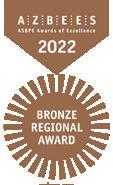
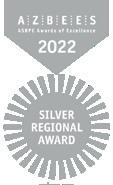
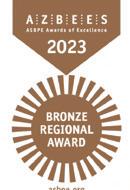


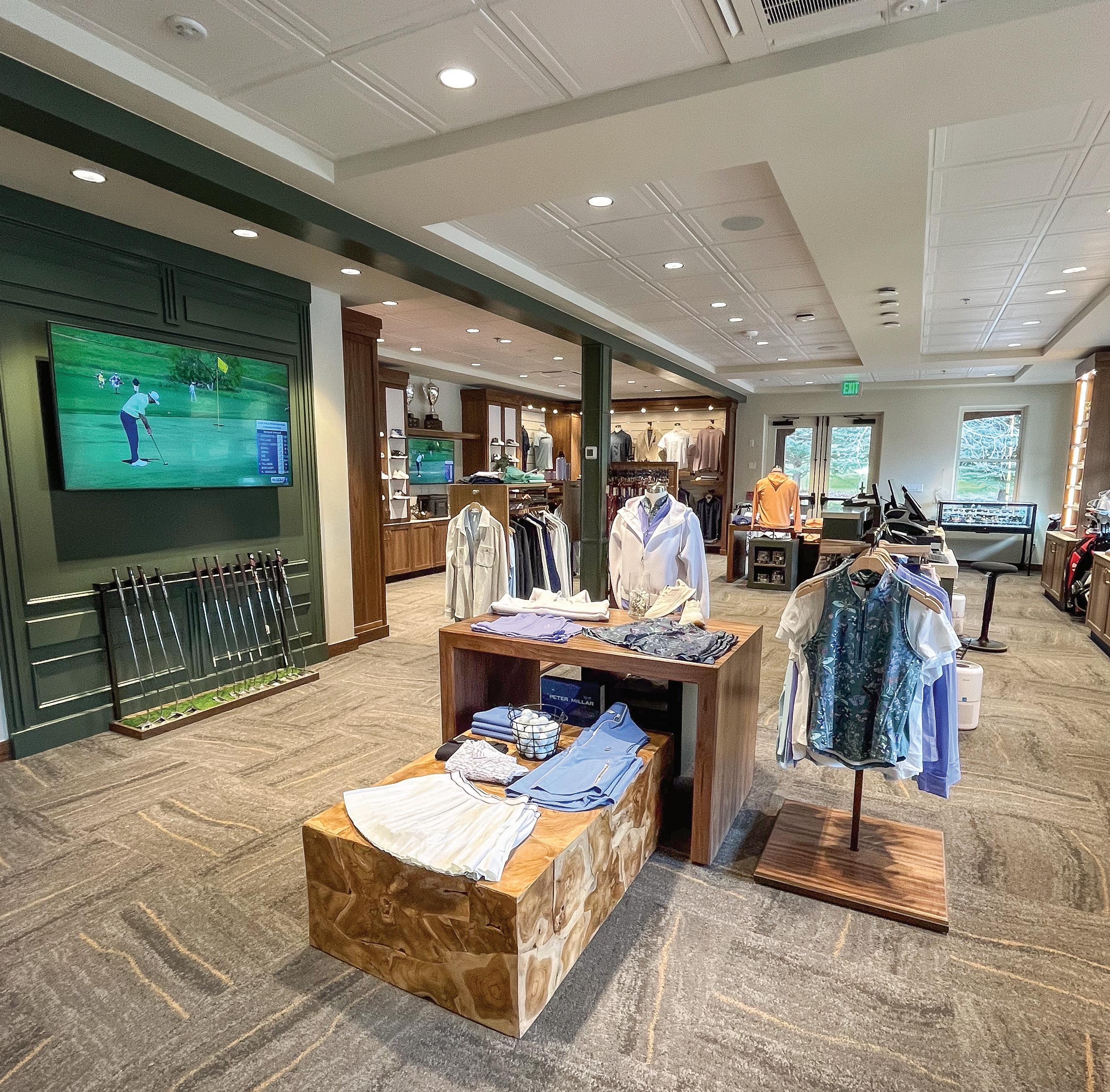

MODEL CLUBS:
Forsyth Country Club in Winston-Salem, N.C., and Philadelphia Country Club in Gladwyne, Pa., have been recognized as Model Clubs for their innovative approaches and staff excellence in the pro shop.
(Cover photo courtesy of Forsyth CC; above photo courtesy of Philly CC.)
4 EDIT MEMO: Two Decades of Dedication
8 MEMBERSHIP + MARKETING: Bridging the Gap: How Private Clubs Can Attract the Next Generation
9 MANAGEMENT: Game On! Building a Winning Team Culture
10 RACQUET OPERATIONS:
The Role of Technology in Racquets Sports Management: Enhancing Operations and Member Experience
20 DESIGN + RENOVATION:
Lifeguard on Duty: Completed Pool Renovations Kick off the Season
As pool season heats up, clubs are capitalizing on their growth potential with family-focused recreation, water fitness and more.
26 SPECIAL REPORT:
Two Decades of Transformation: Reflecting on 20 Years of Club + Resort Business
C+RB marks 20 years of chronicling industry transformations, from diversification and technology to evolving demographics, economic resilience, and leadership.
30 FOOD + BEVERAGE:
Inside Coral Bay Club’s Smarter Kitchen
Coral Bay Club’s culinary team is readying for a grand reopening, following a $20 million full clubhouse and kitchen rebuild to improve flow and efficiency—and take the seasonal operation year-round.
34 PASTRY: Now Playing: Showstopper Pastries That Elevate the Buffet Table
When it comes to eye-catching eats, the proof is in the pastry.
38 MANAGER TO CHEF: How Colonial CC Keeps Culinary Top of Mind
General Manager Frank Cordeiro explains how culinary has evolved under Executive Chef Cynthia Romstadt—and shares goals for the club’s ongoing $100 million capital improvement plan.
40 CLUB + RESORT TALKS PODCAST HIGHTLIGHTS: From Advocacy to AI
National Golf Course Owners Association CEO Jay Karen discusses advocacy, tee time aggregation, and AI in golf on the Club + Resort Talks podcast.
42 INDUSTRY PREDICTIONS:
What role will technology play in enhancing the member experience and driving engagement, and what specific technologies do you see becoming more prevalent?




IN AN ERA OF rapid technological advancements and shifting societal values, private clubs face a critical challenge: staying relevant to the next generation. Traditionally appealing to older members, clubs must now engage millennials and Gen Z, who seek inclusivity, meaningful experiences, and alignment with their values. To thrive, clubs must bridge the gap between tradition and innovation. To connect with younger members, clubs must first understand their values and preferences. Millennials and Gen Z prioritize:
• Authentic Connections: They seek genuine relationships and communitydriven experiences, preferring clubs that create meaningful social interactions.
• Experiential Living: Experiences matter more than material status. Exclusive events, adventure-based activities, and wellness initiatives resonate strongly.
• Digital Integration: This generation has grown up in a digital world and expects seamless technology in all aspects of life.
• Social Responsibility: Sustainability, diversity, and inclusivity are essential factors in their decision-making. Clubs perceived as exclusive in an outdated sense risk losing their appeal.
• Flexibility: Younger generations value adaptability, whether in membership structures, event offerings, or club culture. Rigid rules may discourage them from joining.
Despite their prestige and offerings, private clubs struggle with several key barriers when engaging younger members:
• Perceived Exclusivity: Many younger
By AmirAli Zinati • Marketing and Communications Manager Royal Vancouver Yacht Club • Vancouver, BC, Canada
individuals view private clubs as overly elitist, with high barriers to entry.
• Technology Gaps: Clubs slow to adopt digital tools risk being overlooked by tech-savvy members who expect seamless digital engagement.
• Outdated Membership Models: High initiation fees and long-term commitments can be a deterrent for those who prioritize financial flexibility.
• Lack of Alignment with Modern Values: Clubs that don’t embrace inclusivity, sustainability, and social impact efforts risk becoming obsolete in the eyes of the next generation.
1. Foster Inclusivity and Community
Building a sense of community is crucial for attracting younger members. Clubs can:
• Create welcoming spaces that appeal to diverse demographics.
• Organize culturally relevant events and networking opportunities.
• Actively seek feedback from younger members to evolve offerings.
2. Leverage Technology
Digital transformation is essential for attracting younger members. Clubs can:
• Develop mobile apps for event booking, communication, and payments.
• Strengthen social media presence with engaging and interactive content.
• Offer virtual events and hybrid membership models to reach a broader audience.
• Implement data-driven personalization for member preferences and services.
3. Rethink Membership Models
Traditional membership structures may feel restrictive. Clubs can appeal to
younger demographics by:
• Introducing tiered, trial, or young professional memberships with flexible pricing.
• Offering pay-as-you-go options for specific club amenities and experiences.
• Partnering with co-working spaces, social clubs, or business groups to provide additional membership benefits.
• Providing family-friendly and guestinclusive membership models that reflect the social lifestyles of younger professionals.
4. Focus on Experiential Offerings
Millennials and Gen Z are drawn to exclusive, curated experiences over static club access. Clubs can:
• Host skill-building workshops, leadership development programs, and industry networking events.
• Provide outdoor adventure activities, wellness retreats, and travel experiences.
• Curate themed dining events, wine tastings, or pop-up experiences that appeal to a younger crowd.
• Introduce interactive and immersive programming, such as mixology classes, sustainability projects, and mentorship opportunities.
5. Align with Social Responsibility
A strong commitment to social responsibility can make clubs more attractive to younger members. Clubs can:
• Implement sustainability initiatives, such as reducing plastic use, embracing renewable energy, and sourcing locally.
• Support charitable efforts and collaborate with social impact organizations.
• Prioritize transparency in governance, ensuring members feel involved in club decision-making.
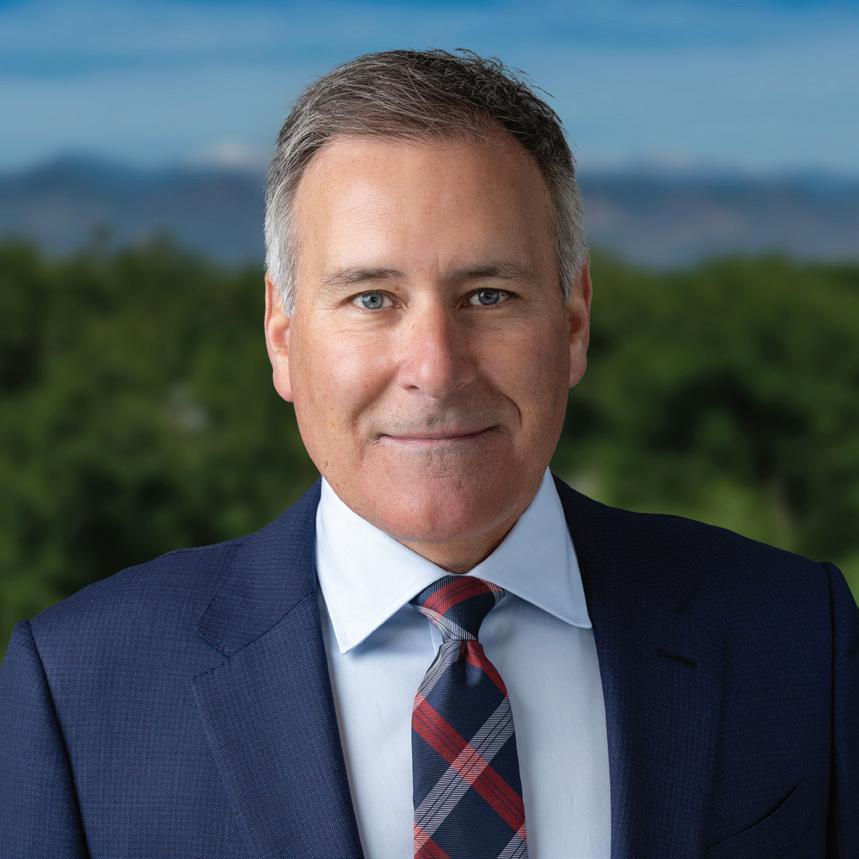
SPORTS HAVE PLAYED A significant role in my life. As the son of an athletic director and coach, I spent hours in athletic facilities observing and listening to coaches prepare and lead their teams. There’s no doubt this influenced my lifelong love of sports and led to my participation in both high school and college. I loved the competition but was equally intrigued by the coach-and-team dynamics. I recognized this at an early age. What I did not know is that it would someday inform my own management style.
If I’ve learned anything about private clubs over the past 27 years, it is that nothing is more important than finding the right people: the people who belong to the clubs we work in and the people with whom we work. In my experience, the elite clubs get both right, and it’s palpable. So, how does it happen?
The common thread among the most successful coaches I’ve encountered is their astute, yet simple, approach to assembling and managing their teams. Without exception, they find the right players, put them in the right positions, prepare them and, once the game starts, get out of their way and let them play. We all know there is much more to coaching and management than this, but as a foundation, I’ve found it’s a solid place to start. ‘Start’ being the operative word.
Three years ago, I had the opportunity to put this to the test. After 17 years at an amazing club, I decided to take on an opportunity that would not only challenge me but require that I dust off this playbook. Over the course of two years, Cherry Hills Country Club was undertak-
Lance Sabella, CCM • Chief Operating Officer Cherry Hills Country Club • Cherry Hills Village, Colo.
“If I’ve learned anything about private clubs over the past 27 years, it is that nothing is more important than finding the right people.”
ing a complete rebuild of its 99-year-old clubhouse, adding multiple new venues and amenities, celebrating its 100-year anniversary, and hosting the United States Amateur Championship. I absolutely had to get the people part right, so relying heavily on the coaches’ model, I built our team. Fortunately, it still works, and I am lucky to have an outstanding group of professionals who bring diverse experiences to our operation. They now occupy the coach’s role for their departments. The cycle continues but doesn’t get easier. Now we must keep it going.
In sports, winning is the ultimate goal. When a team achieves this on a consistent basis, history tells us that players become targets for other organizations, and it can be challenging to stay motivated and maintain success. It is important to recognize that the teams we lead can also fall victim to this. In modern sports, the retention of top performers seems to solely rely upon compensation. In the real world, studies show that compensation is only one of the core reasons for high levels of employee satisfaction, along with work environment, culture, and growth opportunities, to name a few. Expectations are high; to keep winning, we must meet them.
At Cherry Hills, one approach we use is rooted in two words: Who’s next? This is a standing agenda item at our management meetings and is intended to foster
discussion about individuals who have potential and have an interest in a longterm relationship with the club and our industry. From that premise, we formalized ‘Who’s Next?’ as a program designed to offer a select group of high-performing staff the opportunity to develop their leadership potential and expand their knowledge.
Here’s how it works: Our management team identifies candidates. This year, we had 30 (a good problem to have). Six individuals were selected and received a formal invitation to participate. The curriculum is introduced at a celebratory lunch. Classes take place in a group setting, and topics include:
• Private Club Management & Financials
• Food & Beverage
• Golf
• Golf Course Maintenance
After completing the courses and passing a competency test, they have increased responsibility within their department and the opportunity for direct training in other areas of the operation. Competition breeds excellence, so to encourage others to strive for selection to the program, we make sure that the group is overtly recognized.
So far, this strategy is working—but the game’s far from over. Sustained winning is hard. It’s why few can do it. I learned that from the coaches.

IN TODAY’S WORLD, WHERE 76% of club members expect digital booking options, racquet sports professionals must embrace technology to stay competitive. Imagine a member arriving for a scheduled lesson only to find their court double-booked. Another cancels last minute, leaving a court empty. These everyday challenges highlight why clubs are adopting smart technology to improve operations and enhance the member experience.
As a lifelong racquets professional and co-founder of a multi-sport reservation software program, I have seen firsthand how technology is reshaping racquet sports management. While tradition and personal connections remain at the heart of great clubs, innovation allows professionals to optimize scheduling, coaching, and overall operations.
Managing court availability is one of the biggest challenges for racquet sports departments. Traditional sign-up sheets and phone reservations often lead to double bookings, miscommunication, and underutilized courts. Digital court reservation software eliminates these issues by allowing members to book courts, clinics, and lessons through an app, reducing staff workload. Real-time availability ensures courts are used efficiently, while automated reminders and waitlists help minimize no-shows.
For clubs adopting automated systems, the impact is significant. Studies show a 15-20% increase in court utilization and a 30% drop in scheduling conflicts. Digital booking systems also reduce the administrative time spent on scheduling by 25%, allowing professionals to focus more on
Yev Supeko, MBA, RSPA, PPR, RPO, Padel MBA • Director of Racquets
player engagement.
Technology has transformed how players improve their game. Wearable sensors, smart racquets, and AI-powered tracking tools now provide real-time data on stroke mechanics, shot consistency, and movement patterns. Coaches can design lessons based on detailed analytics, while players track progress and set goals through interactive insights.
Beyond coaching, AI-driven technology enhances the overall member experience by personalizing club interactions. Reservation systems analyze playing habits to suggest court bookings, clinics, or private lessons tailored to individual preferences. If a member consistently plays doubles on Thursdays, the system can hold a court or recommend similar social events. AIdriven pro shop technology also tailors recommendations based on purchase history, boosting sales while improving member satisfaction. Clubs using AIpowered retail strategies have reported a 15% increase in pro shop revenue.
AI is redefining coaching by automating video analysis, allowing players to record and review matches instantly. Instead of manually breaking down footage, coaches can focus on high-level strategy. While some worry AI could replace human coaching, it is best used as a tool to enhance instruction rather than replace it.
Beyond training, AI is streamlining club operations. Automated event registration allows members to sign up for tournaments and social play with ease, while integrated payment systems eliminate the need for manual invoicing. Real-time notifications keep members informed
about court assignments, event changes, and match results. AI-powered analytics help clubs predict demand for courts and clinics, ensuring optimal scheduling and staffing. Clubs using automated event management systems report a 30% reduction in administrative workload and increased participation due to improved communication and convenience.
Over the past two decades, technology has drastically changed racquet sports. From a computer system that uses cameras to track a tennis ball’s flight path and determine if it’s in or out to today’s AI-driven coaching and smart court systems, clubs have continuously adapted. The 2010s brought smart racquets and video analysis, while the 2020s have seen the rise of AI-powered match tracking and club management software. Looking ahead, virtual reality training and IoT-connected equipment will further enhance operations.
Despite these advances, clubs must balance innovation with personal connection. The best clubs will embrace technology while maintaining relationships.
The question is no longer whether clubs should adopt technology, but how quickly they can integrate AI-driven systems to stay ahead. Now is the time for club leaders to assess their technology landscape, identify areas for improvement, and invest in smart solutions that enhance both efficiency and member experience. As racquet sports evolve, clubs that leverage the right technology will set the industry standard, ensuring superior experiences for their members while securing long-term success.




By Rob Thomas • Editor-in-Chief
Forsyth Country Club in Winston-Salem, N.C., and Philadelphia Country Club in Gladwyne, Pa., have been recognized as Model Clubs for their innovative approaches and staff excellence in the pro shop.
CLUB + RESORT BUSINESS has named Forsyth Country Club (FCC) and Philadelphia Country Club (PCC) as Model Clubs - Pro Shops, recognizing their outstanding retail offerings, customer service, and commitment to enhancing the golf experience for their members.
Despite its compact size, the golf shop at Forsyth Country Club in Winston-Salem, N.C., maximizes space and creativity to deliver a high-end shopping experience. Offering a diverse selection of apparel, equipment, and accessories, FCC has adopted a “lifestyle” merchandising approach, incorporating casual and athletic wear for both men and women. Seasonal collections include premium brands, cashmeres, woven button-downs, and denim. Special limited-run items, such as Tremont Sporting Co. headcovers, incorporate unique aspects of the club’s course design and history.
“We primarily focus on stocking highquality, exclusive items in our pro shop because that’s what our members are most interested in. Our members value premium, top-tier items, and we’ve found that the demand for lower-priced


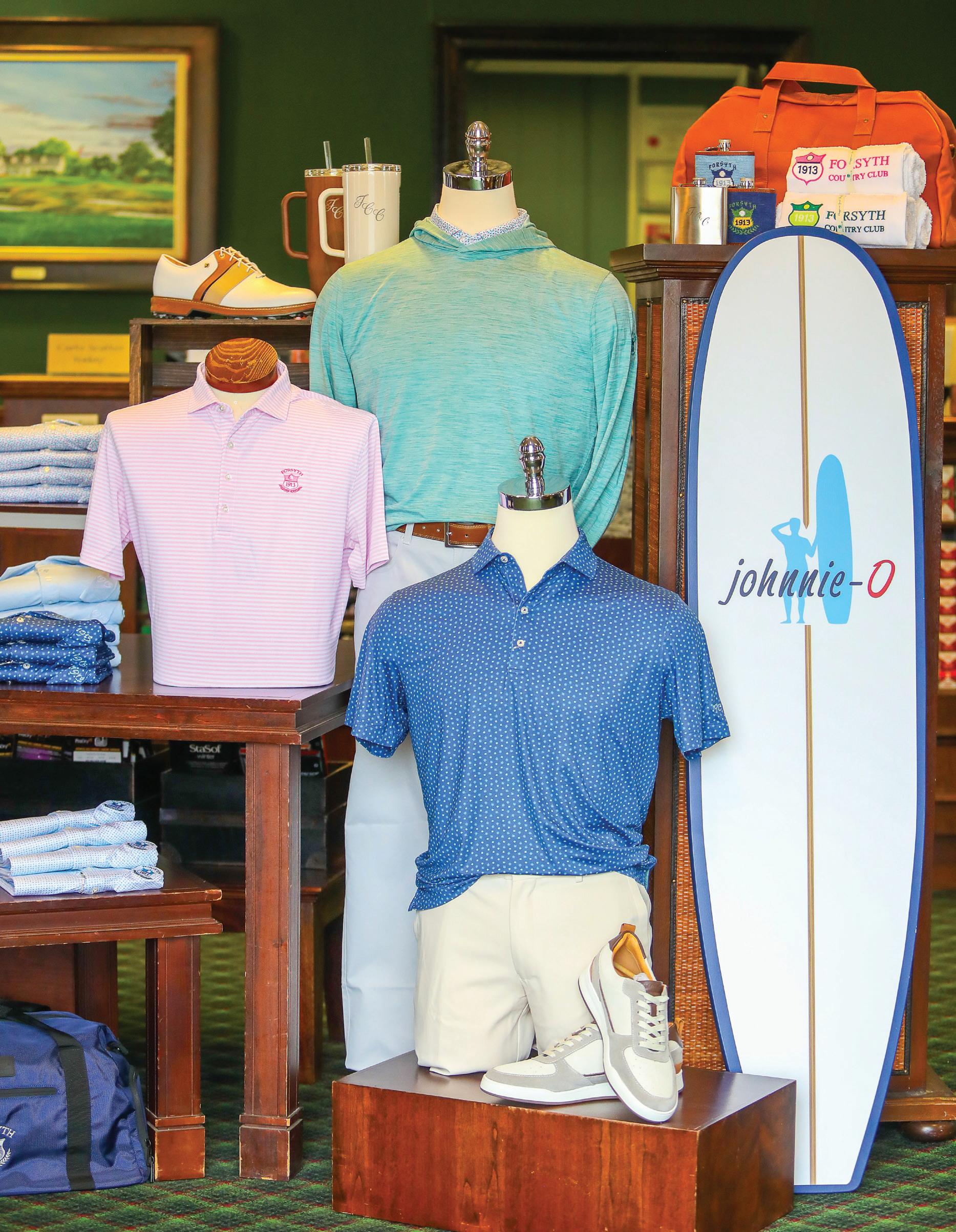
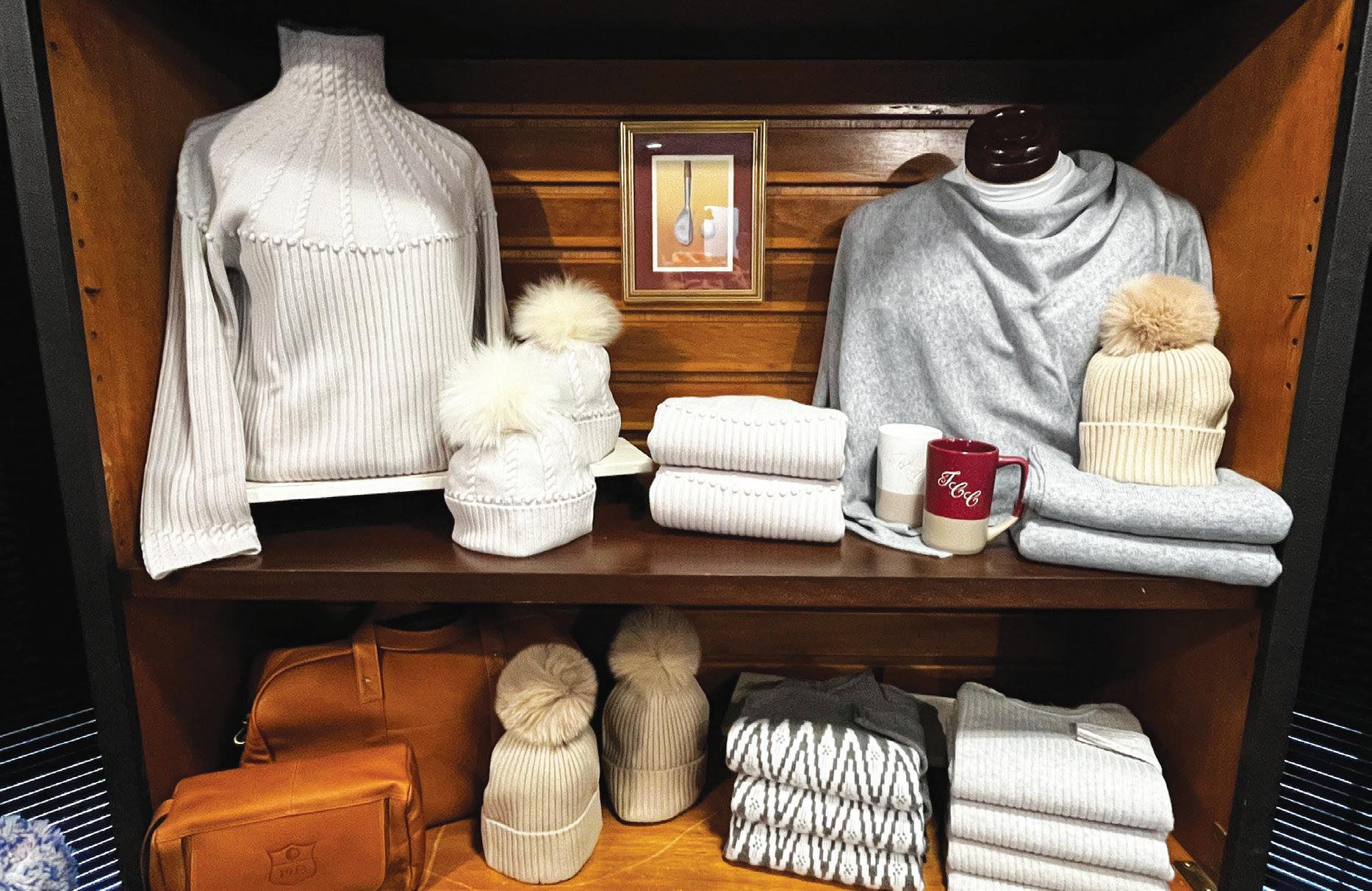
Forsyth Country Club’s events and promotions are highly successful, with Trunk Shows aligning with major tournaments and a Winter Market event that generated more than $10,000 in just three hours.
products is minimal when quality is prioritized,” says Ellise Little, Golf Shop Merchandiser. “Our goal is to ensure that our members have access to the best equipment and gear available. However, we understand that quality doesn’t always correlate with a higher price point. We proudly carry brands that offer superior quality at more economical prices.”
A standout feature of FCC’s golf shop is its exclusive fitting experiences. With Director of Golf Chase Adams serving as a major golf brand board member and oncourse influencer, the club hosts elite fitting days featuring the latest equipment. The shop leverages the latest software for inventory and special orders, ensuring a seamless retail experience.
FCC’s events and promotions are highly successful, with Trunk Shows aligning with major tournaments and a Winter Market event that generated more than $10,000 in just three hours. The shop’s strong social media presence helps keep members engaged and informed about new arrivals and promotions.
“Social media has played a major role in our golf shop’s success,” Little explains. “We make it a point to post at least once a week, showcasing new products, upcoming events, and special contests and giveaways. Since so many people are on their phones these days, connecting with them through social media has proven to be one of the best ways to drive sales and enhance member engagement. Our Instagram is especially active, and we also stay in touch with our members through weekly newsletters and an interactive app.”
Using humor in posts and reels is the best way to capture their audience.
“We try to put faces they know in front of the camera as much as possible,” Little
Ellise Little, Golf Shop Merchandiser at Forsyth Country Club, says the club primarily focuses on stocking high-quality, exclusive items in the pro shop because that’s what its members are most interested in.
continues. “They love to see what the club is up to when they are not there.”
In addition to social media, Little and her team make sure to maintain personal connections through direct member outreach.
“Our weekly newsletters keep members informed about what’s happening around the club, in the shop and upcoming sales, but we also like to send personalized messages when there’s something we think they’d be interested in,” she says. “New arrivals that match their style or special sales for something they’ve been eyeing.”



Megan Kwortnik, Golf Shop Manager at Philadelphia Country Club in Gladwyne, Pa., offers an extensive selection of apparel, equipment, and unique lifestyle goods. The shop features brands for men, women, and juniors, along with premium accessories like rangefinders, leather goods, and sunglasses. New collections are
introduced each spring following the PGA Show, with staff members personally selecting new brands to bring into the shop.
The club maximizes pro shop revenue while balancing profitability by offering special orders and corporate orders to its members.
“Since we are limited in space, we can order additional sizes or colors and

provide our members with the opportunity to order items not carried in the shop, from one of our vendor partners,” Kwortnik explains. “Our members can order merchandise from their favorite golf shop brands for their businesses. We offer competitive pricing which incentivizes placing the order with us, someone they know and trust.”

Philadelphia CC’s commitment to customer service sets it apart, with staff members knowing each member personally and curating tailored shopping experiences. The shop offers a carefully selected range of brands for men, women, and juniors, along with premium accessories such as rangefinders, leather goods, and sunglasses.
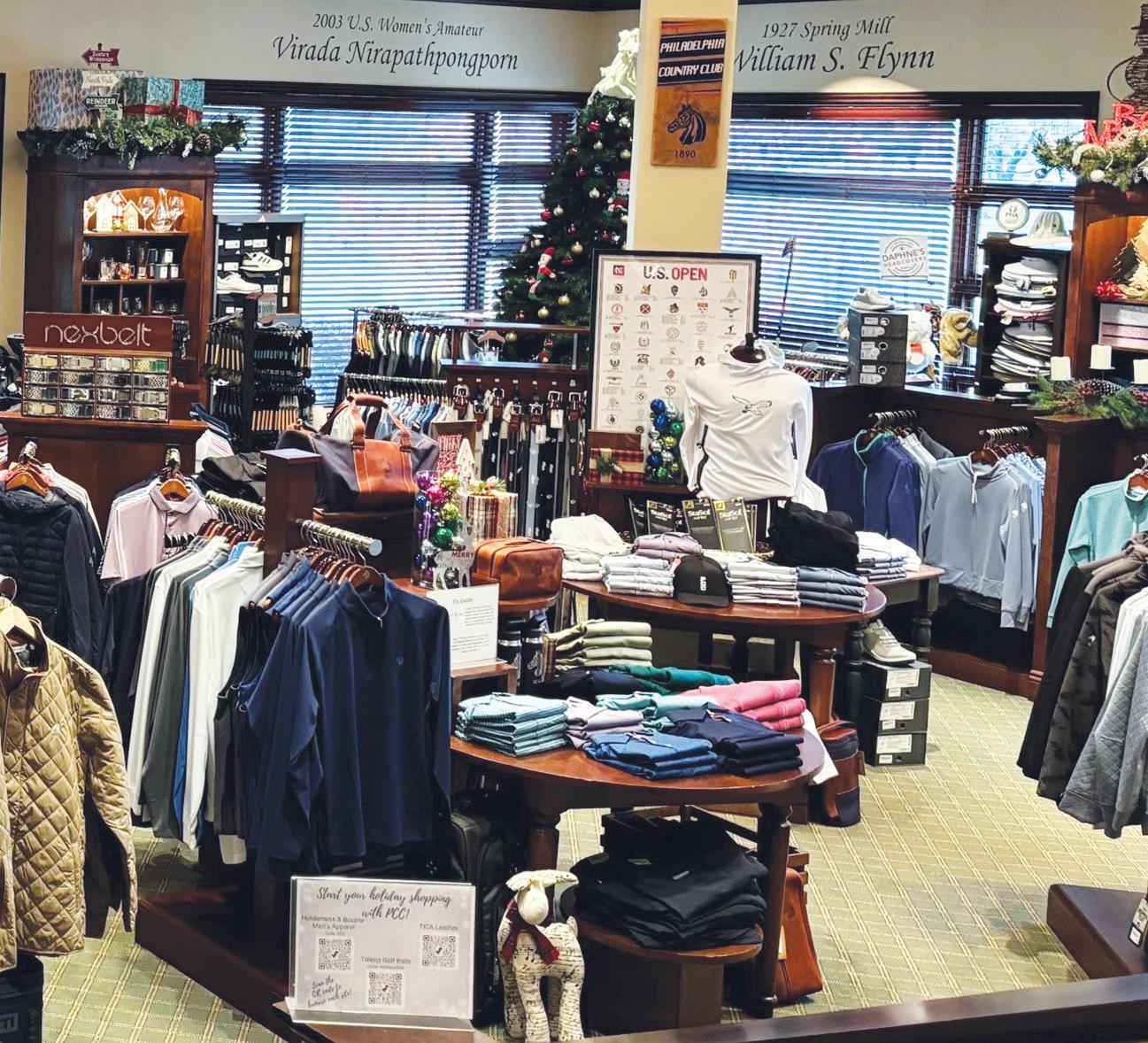
Megan Kwortnik, Golf Shop Manager at Philadelphia Country Club, integrates product knowledge into a new staff member’s training during their first two weeks, walking them around the shop and going over all the details.
PCC’s commitment to customer service sets it apart, with staff members knowing each member personally and curating their shopping experience accordingly. The shop provides top-tier services, including club fitting, regripping, and special orders.
“Staff brand training is a must. The Golf Shop Manager/Merchandiser can’t be on the floor 24/7,” Kwortnik says. “I integrate product knowledge into a new staff member’s training their first two weeks here, walk them around the shop and go over all the details. It is imperative they know what is on the floor, brand


Philadelphia CC gives its staff the ability to see a product from start to finish: they attend buying meetings, assist with invoicing/pricing/tagging/ merchandising when the product comes in and promote/sell the item(s).

fits, feels and pricing, as we carry a wide variety in our golf shop.
“The most effective way I increase product knowledge is by giving my staff ‘pop quizzes’ throughout the season,” she continues. “And that is as simple as asking ‘What brand would you recommend a member who is tall & thin?’ or ‘What is the best shoe brand for a narrow foot?’ or ‘What would you recommend to a male member as a gift for their wife?.’ We also give our staff the ability to see a product from start to finish: they attend buying meetings, assist with invoicing/pricing/tagging/ merchandising when the product comes in and promote/sell the item(s).”
A key highlight is PCC’s “First Friday”
Happy Hour event, held in December to kick off the holiday sale. This social gathering generates significant revenue, with the 2023 event bringing in $21,000 in profit. The shop utilizes advanced technology, including JONAS for point-of-sale, Golf Genius for tournament management, and MembersFirst for online sales and tee times.
“We tailor our merchandise selection by paying close attention to what our members are wearing and what brands they’re asking for when they come in,” Kwortnik says. “And we have a great variety of brands, that differ in pricing to accommodate all customers. My Head Golf Professional, Scott Reilly, stands on the first tee every Saturday morning to greet our members. He will take note on the

member’s footwear and apparel choices and report back to me. And as the golf shop buyer, it is vital that you buy what your members like, not what you like.”
Both Forsyth Country Club and Philadelphia Country Club exemplify what it means to be a Model Club Pro Shop, offering innovative retail experiences, outstanding customer service, and curated selections tailored to their memberships. Through strategic events, exclusive product offerings, and a commitment to enhancing the overall club experience, these golf shops continue to set the standard in the industry. C+RB

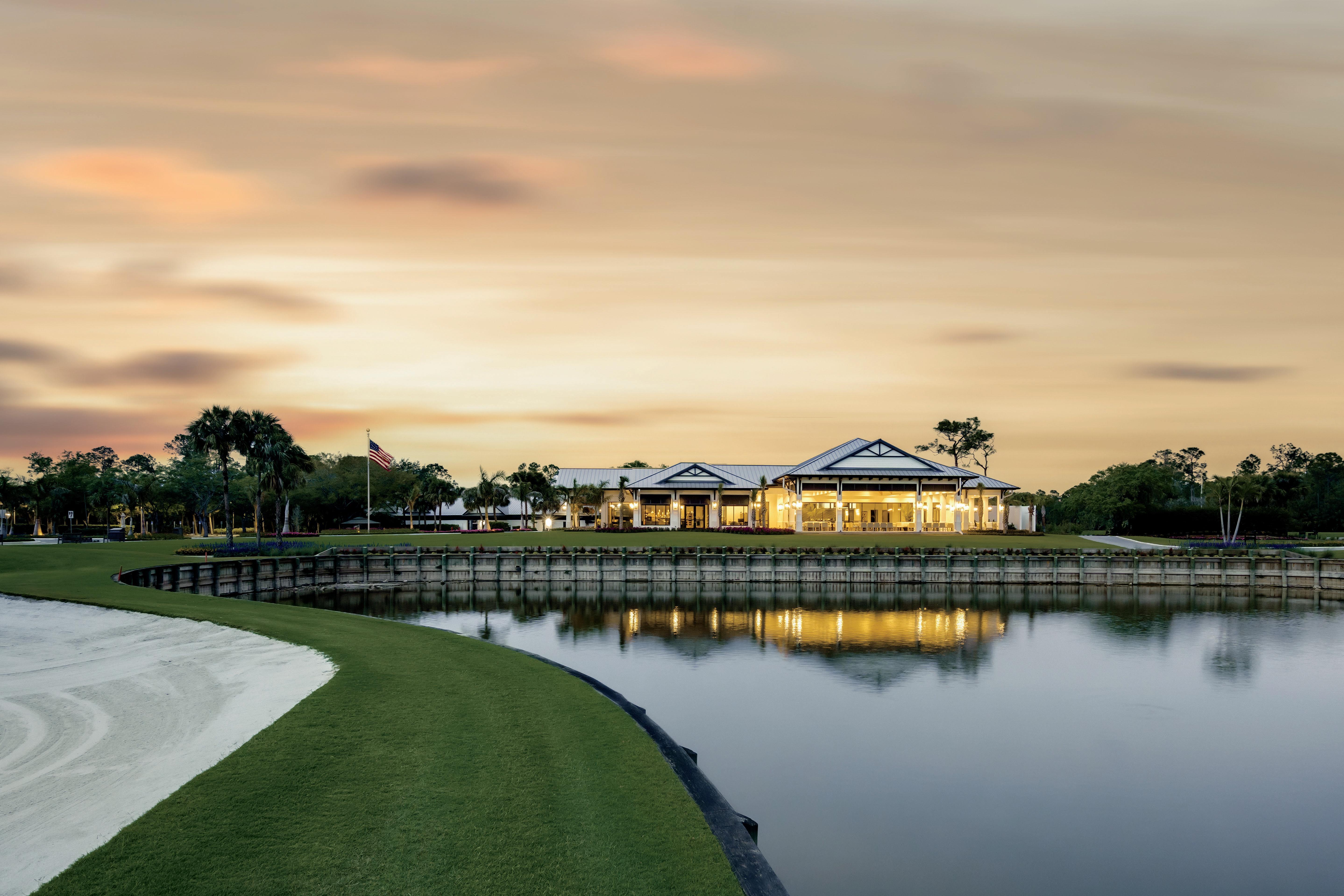

As pool season heats up, clubs are capitalizing on their growth potential with family-focused recreation, water fitness and more.
By Pamela Brill • Contributing Editor
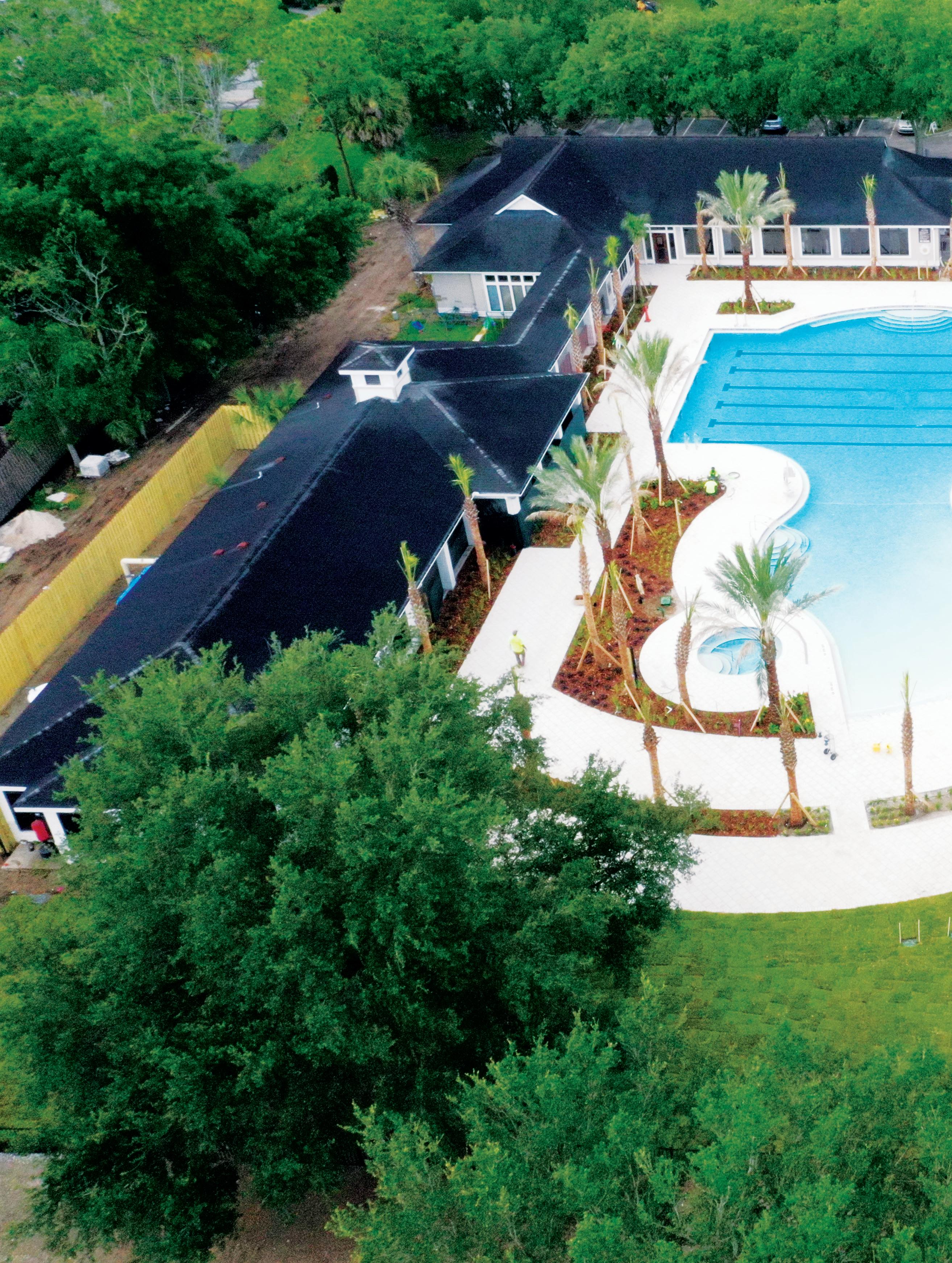

CERULEAN BLUE WATERS beckon sunbathers to leave their lounge chairs and take a refreshing dip. Meanwhile, swim team divers perched on starting blocks gaze over at kids frolicking on splash pads, where peals of laughter intermingle with adult voices discussing vacation plans and golf games.
It’s another day at the pool, but it’s hardly ho-hum. Members are excited to bring their families and guests to the club, where they can show off updated facilities with cool water features, ample seating and adjacent amenities. Here’s how three recent pool projects are ushering in the summer season.
Members at Deerwood Country Club in Jacksonville, Fla., are basking in the afterglow of their latest design project. The first part of a two-phase renovation, the opening of a brand-new aquatics center kicked off the 2024 summer season, just in time for the annual Fourth of July celebration. The $2 million renovation project represents what General Manager C. Thayer Kern describes as the desire “to bring the member experience to new heights of luxury and sophistication.”
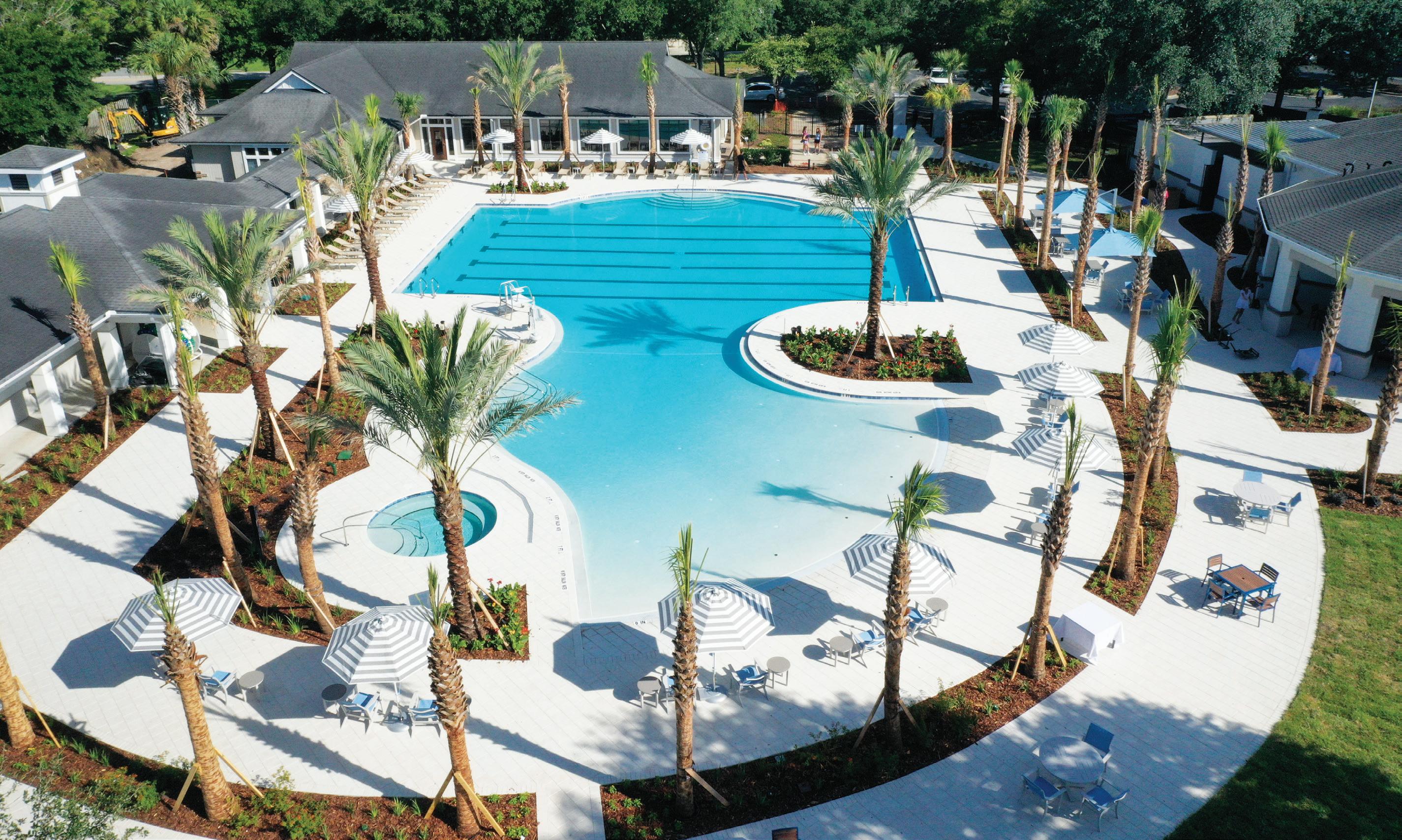
Jacksonville, Fla.
“The primary goal was to cultivate a resort-like atmosphere that seamlessly integrates with the clubhouse, aquatics and fitness facilities.”
- C. Thayer Kern; General Manager
The 6,000-sq.-ft., zero-entry style pool replaces the circa 1960s structure that had been well utilized over the past several decades. Six lap lanes with starting blocks, integrated splash pads and a Jacuzzi spa that seats 10 are a draw for kids and adults alike. While remaining in its original location, the pool itself is now bolstered by a revamped decking area with vistas of the golf course and Lake Deerwood. “The primary goal was to cultivate a resort-like atmosphere that seamlessly integrates with the clubhouse, aquatics and fitness facilities,” notes Kern.
On dry land, loungers and other outdoor chairs for up to 122 guests provide comfortable seating for sunbathers, with
market and cantilever umbrellas for those in search of protection from the Florida sun. The easily accessible clubhouse kitchen provides food service via a snack bar window, as well as poolside wait service.
The pool’s close proximity to the adjacent fitness center is also a plus for members looking to enhance their exercise regime or to soothe tired muscles in the hot tub. Waters are properly maintained with daily treatments, cleaning and chemical balancing from a local care provider. “The design thoughtfully balances modern furnishings with newly planted, colorful and low-maintenance landscaping, which our members feel has created an inviting and perfectly balanced outdoor space to
enjoy,” says Kern.
With membership gearing up for its first full summer since the pool’s opening, Deerwood’s pool is prepared for all levels of activity. From swim team practices and meets, to fitness classes and water-based recreational activities, Kern is anticipating another great season by the water. “With a significant portion of our membership consisting of families, we are excited to introduce new activities and establish new club traditions,” he enthuses. The club has already seen a 21-percent increase in membership since the pool complex’s opening.
All good things come to those who wait, and that adage is especially true at Valley Country Club in Centennial, Colo., where members awaited an updated aquatics facility that was two years in the making. “Changing trends in the industry dictated the need for more of a resort-style atmosphere,” says Director of Communications Doug Werner. After an extensive period
“Changing trends in the industry dictated the need for more of a resort-style atmosphere.”
- Doug Werner; Director of Communications
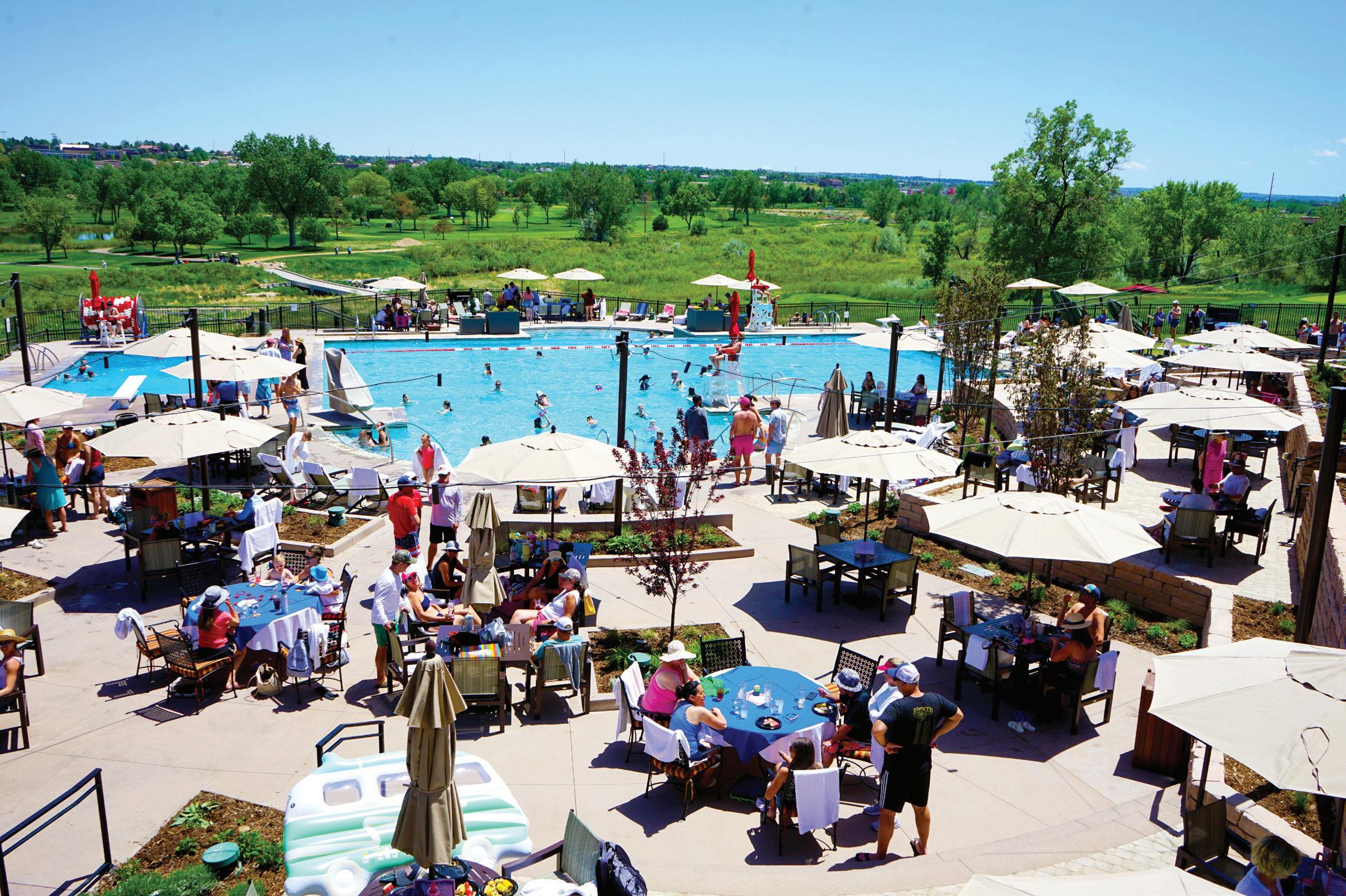
without access to a swimming pool, members are enjoying their time back in the water where they can cool off and relax with family and friends.
Budgeted at $9 million, the 5,000-sq.ft. pool, completed last May, is designed with both families and serious swimmers in mind. Designers created a half Olympicsized pool with two semi-circular step entrances for easy access. Dedicated lap lanes and a 10-foot diving well service the swim team, while a separate 330-sq.-ft.
toddler pool area with sprinklers—separate from the main pool and manned by its own lifeguard—is a draw for young families. An adults-only swim area gives non-competitive swimmers their own space to socialize in a splash-free zone. Convenient access to Valley Country Club’s other amenities is now available at this all-inclusive complex, nestled between a fitness center on one end and The Bird’s Nest dining facility on the other. A mix of umbrella tables and loungers are dotted

at $9 million, the
throughout the 17,000-sq.-ft. pool deck area, enabling guests to take advantage of poolside dining and establishing a clear service path for staff. Maximum capacity allows for 250 patrons on the deck, with an additional 100 spots at The Bird’s Nest patio. This casual dining spot, which has a full bar with walk-up counter, handles all poolside food and drink service.
Since last year’s pool opening, member feedback has been overwhelmingly positive. “After [two] summers without the pool, they were very eager to get back to their favorite activities,” notes Werner. “The swim team has made great use of the pool and is very eager to host meets and show off the new facility.” The club is currently investigating other ways to incorporate the pool into its youth and fitness programs.
The 2025 Memorial Day weekend is bound to be a momentous occasion at Loch Lloyd (Mo.) Country Club. A comprehensive pool center will be unveiled as part of a $25 million capital improvement project, which also includes a recreation complex. Designed with spacious outdoor

Loch Lloyd, Mo.
seating and dining facilities, the updated venue is expected to make a splash with members and staff alike.
Wear and tear of the club’s well-used pool prompted management to refresh this facility. “The need for this renovation stemmed from the original pool’s deteriorating condition, which had required substantial repairs over the past decade, as well as the necessity of upgrading building systems to meet modern standards,” says Marketing Director Megan Lolli. The new pool area is now comprised of a 5,000-sq.ft., 25-meter competition pool, along with a 1,500-sq.-ft. recreational pool. The larger facility features six lap lanes for fitness swimmers and volleyball net inserts for water play. The recreational pool boasts a zero-entry design, one that Lolli notes is “perfect…for families with small children learning to swim or anyone who prefers a gradual entry,”.
A major design component in Loch Lloyd’s pool complex is 3,200 sq. ft. of elevated decking, outfitted with cabanas, chaise loungers, umbrella seating and shaded seating options. According to
“Every design decision was made with the member experience in mind, ensuring that the pool and its surrounding amenities create a luxurious, engaging and functional environment.”
- Megan Lolli, Marketing Director
Lolli, providing extra space for daily use and special events was a key factor in the design plans. (An integrated audio-visual system also enhances the set-up.) Food and beverage is supplied by a full-service bar, offering poolside dining for added convenience and comfort. “Every design decision was made with the member experience in mind, ensuring that the pool and its surrounding amenities create a luxurious, engaging and functional environment,” explains Lolli.
With opening day right around the corner, the club’s pool will be able to host the Loch Lloyd Lightning Swim & Dive team for the duration of the summer season. Also in the works are expanded fitness programs, youth swimming lessons and potential camp opportunities. C+RB
> After weathering years of usage, pool facilities are overdue for a refresh.
> Enhancing pool complexes with comfortable seating and convenient access to food and drink provides an all-encompassing environment.
> Pool designs include a combination of zero-entry with lap lanes for competitive swimmers.


C+RB marks 20 years of chronicling industry transformations, from diversification and technology to evolving demographics, economic resilience, and leadership.
By Rob Thomas • Editor-in-Chief
TWENTY YEARS AGO, the landscape of the club and resort industry looked vastly different. As Club + Resort Business celebrates its 20th anniversary, it’s a fitting moment to reflect on the profound transformations that have shaped this dynamic sector. From navigating economic downturns and embracing technological advancements to adapting to shifting demographics and unforeseen global events, the industry has demonstrated remarkable resilience and innovation.
Joe Barks, remembers the overriding mantra, and litmus test for every article in the beginning, was to have “an idea on every page.”
“My personal goal was to have General Managers take each issue into a staff meeting and start tearing it apart, telling the golf pro he should read this article, the chef that he should read this one, the superintendent he should read this one, and on around the table to each department head,” Barks says.
As for choosing the club to be featured on the inaugural cover, proximity and timing played major roles.
“Fortunately, I was living in the Philadelphia area at the time and knew the board president of Waynesborough Country Club, which had just completed an impressive clubhouse makeover,” Barks says. “We


were given full access to tell that story and it anchored our debut issue, which we then sent off into the mail stream and waited to hear what people thought.”
Barks, as well as founders Bill Donohue and Dan Ramella, quickly heard from industry leaders like Oakmont Country Club, Baltusrol Golf Club, and Congressional Country Club, which reached out in that
first year to invite C+RB to feature their stories and staffs. “That certainly bolstered our credibility and standing in the industry and created additional momentum for our growth and acceptance as a valuable and trusted information source,” Barks says.
BEYOND THE FAIRWAY
One of the most significant shifts over
C+RB’s Chef to Chef magazine (left) launched in 2012 as an extension of the conference, providing a year-round resource for club and resort chefs. In 2018, C+RB’s Chef to Chef became Club + Resort Chef (right), a name that better reflected its broader mission.
the past two decades has been the industry’s realization that reliance solely on golf memberships was unsustainable. Club + Resort Business has chronicled the rise of diversified revenue streams, a critical strategy for ensuring financial stability. The traditional model, dependent on fluctuating golf participation, has given way to a more holistic approach.
The modern country club is a multi-faceted entertainment and lifestyle destination. Wedding venues, corporate retreats, and social gatherings have become integral components of the business model. Clubs have invested heavily in event spaces, culinary offerings, and personalized service to attract a broader clientele. This diversification has been crucial in mitigating the impact of economic downturns and seasonal fluctuations in golf play.
This shift has not only boosted nondues revenue but also enhanced the club’s overall appeal and relevance in the community.
The Chef to Chef Conference began in 2009 as a simple but powerful idea: Club and resort chefs needed a space dedicated entirely to their craft, where they could exchange ideas, refine their skills, and connect with peers who understood the unique challenges of club kitchens.
“That first gathering in Las Vegas drew just 55 attendees, but the concept had legs,” recalls Joanna DeChellis, Editorial Director and driving force behind the culinary side of the publication. “Chefs left energized, armed with insights they couldn’t get anywhere else. Year after year, the conference grew, attracting more chefs and expanding its focus to include

leadership, menu development, and the evolving role of the club culinary team.” Building on that momentum, C+RB’s Chef to Chef magazine launched in 2012 as an extension of the conference, providing a year-round resource for club and resort chefs. The publication delivered in-depth chef profiles, operational insights, and peer-driven content tailored specifically to the unique demands of club and














resort F&B programs. “It quickly became a trusted source, amplifying the voices of industry leaders and showcasing the ingenuity happening inside club kitchens across the country,” DeChellis says.
As the brand continued to evolve, so did its name. When it was acquired by WTWH Media, C+RB’s Chef to Chef became Club + Resort Chef, a name that better reflected its broader mission. No
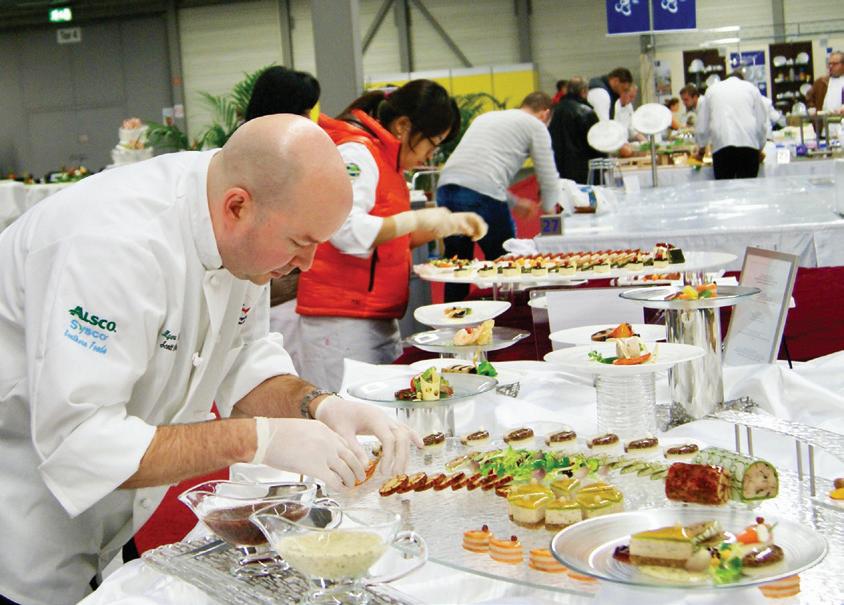
Club + Resort Chef has become the leading media brand for club and resort culinary professionals, expanding its reach across digital platforms,
and

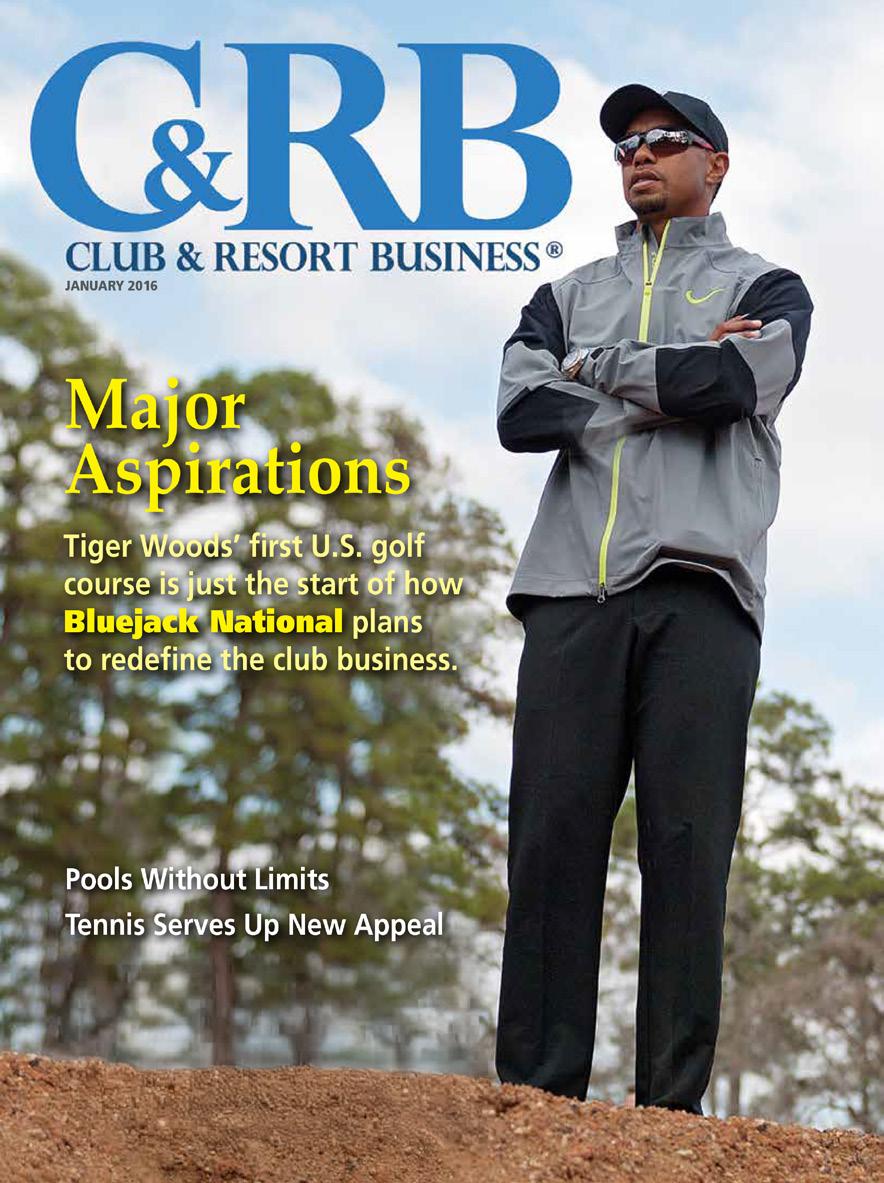
longer just an extension of the conference, it became the leading media brand for club and resort culinary professionals, expanding its reach across digital platforms, social media, and video.
A new name on the Chef side coincided with a new look for both publications. Erin Canetta, Creative Director, has been designing C+RB/C+RC for the last nine years.
“Our approach to design has evolved over the years in a direction where we

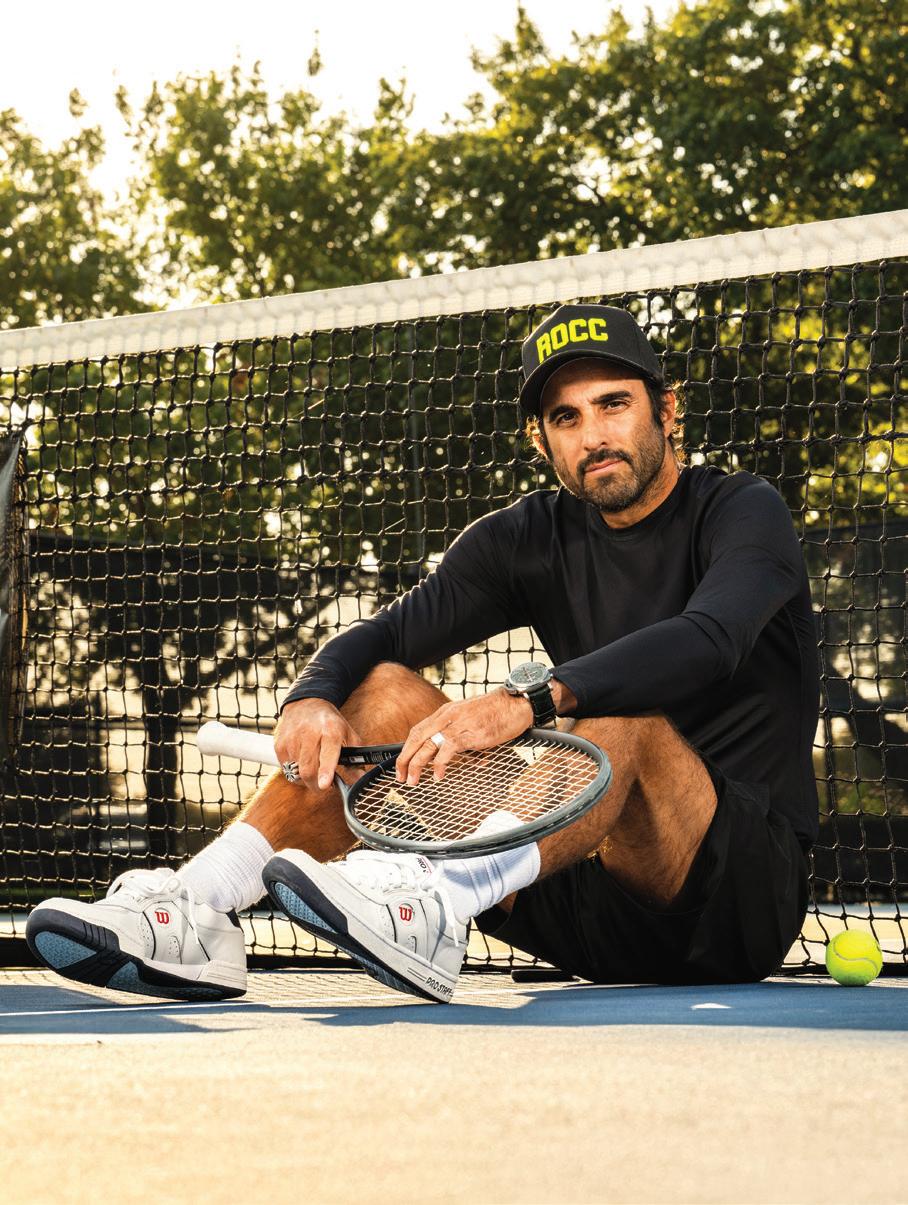
focus on the beautiful images we’re provided as much as the written word,” Canetta says. “We’re lucky to be a part of an industry of beautiful spaces, landscapes, and food, so we let those images help tell the story. In the last year, we’ve been focusing on putting the people of the industry on our covers because we understand it’s the people in the industry that are the central focus to any well-run club and kitchen.”

“In the last year, we’ve been focusing on putting the people of the industry on our covers because we understand it’s the people in the industry that are the central focus to any well-run club and kitchen,” says Erin Canetta, Creative Director.
The perception of country clubs as exclusive enclaves for older, affluent individuals has been challenged over the past 20 years. Club + Resort Business has been instrumental in showcasing the industry’s efforts to attract a younger and more diverse membership base. Recognizing the need to adapt to changing demographics, clubs have embraced innovative strategies to engage younger players and families.
Technology has played a pivotal role in this transformation. Driving ranges have been upgraded with advanced simulators and performance tracking systems, making practice sessions more engaging and data-driven. Indoor simulators have become popular attractions, offering year-round golfing experiences regardless of weather conditions. The rise of golf entertainment venues like Topgolf has further fueled interest in the sport among younger demographics, bridging the gap between traditional golf and entertainment.
Family-friendly amenities have also become a priority. Clubs have invested in swimming pools, fitness centers, children’s programs, and social events that cater to the entire family. This inclusive approach has helped create a vibrant and welcoming atmosphere, attracting a new generation of members.
The digital revolution has transformed nearly every aspect of the club and resort industry. Club + Resort Business has kept its readers abreast of the latest technological advancements, from online booking systems and course management software to performance tracking devices and
Covers have proven to provide a snapshot in time. From the rise of clubs adding indoor simulators (left) to their list of amenities to the COVID-19 pandemic (right) that forced clubs to shift operations on the fly.
virtual reality simulations.
Course management software has enabled superintendents to optimize irrigation, fertilization, and maintenance schedules, improving course conditions and reducing environmental impact. Online booking systems have streamlined tee time reservations, making it easier for members and guests to access the course.
Technology has also enhanced the dining and hospitality experience, with online ordering, mobile payment options, and personalized service platforms. The magazine has highlighted the importance of embracing digital tools to enhance efficiency, improve customer service, and create a seamless member experience.
The club and resort industry is subject to regional variations, influenced by climate, demographics, and economic conditions. Club + Resort Business has provided comprehensive coverage of the challenges and opportunities facing clubs in different regions.
The Southeast, with its favorable climate and established golf culture, has consistently been a strong market. However, the West and Southwest have faced increasing challenges due to extreme droughts and wildfires. Clubs in these regions have had to implement water conservation measures, invest in fire prevention systems, and adapt their operations to mitigate the impact of climate change.
The magazine has also highlighted the unique challenges facing clubs in urban areas, where competition for land and resources is intense. Clubs in these areas have had to be creative in maximizing their space and offering unique experiences to attract members.


The club and resort industry is not immune to economic fluctuations. Club + Resort Business has chronicled the industry’s resilience in the face of economic downturns, including the 2008 financial crisis and the recent COVID-19 pandemic.
The pandemic caused unprecedented disruptions, forcing clubs to close their doors and adapt to new operating procedures. However, the industry demonstrated remarkable adaptability, quickly implementing safety protocols, enhancing outdoor dining options, and offering virtual events and fitness classes. The pandemic also led to a surge in golf participation, as people sought outdoor activities and socially distanced recreation.
The magazine has also covered the industry’s response to changing consumer preferences, such as the growing demand for healthy dining options, sustainable practices, and personalized experiences. Clubs have adapted their offerings to meet these evolving needs, ensuring their relevance in a competitive market.
In the years leading up to the magazine’s inception, and in the years
following, the industry witnessed numerous golf course and country club closures. However, the past few years have seen a remarkable resurgence, with tee times fully booked and waitlists for club memberships becoming increasingly common.
Club + Resort Business has documented this shift, highlighting the factors contributing to the industry’s revitalization. The increased interest in golf, the diversification of revenue streams, and the focus on enhancing the member experience have all played a role.
The magazine has also emphasized the importance of strong leadership, effective management, and a commitment to innovation. As the industry continues to evolve, these qualities will be essential for ensuring long-term success.
As Club + Resort Business celebrates its 20th anniversary, it’s clear that the club and resort industry has undergone a remarkable transformation. By embracing innovation, adapting to changing demographics, and navigating economic challenges, the industry has positioned itself for continued growth and success. The magazine will continue to be a vital resource for industry professionals, providing insights, analysis, and best practices to help them thrive in a dynamic and competitive market. C+RB
Coral Bay Club’s culinary team is readying for a grand reopening, following a $20 million full clubhouse and kitchen rebuild to improve flow and efficiency—and take the seasonal operation year-round.
By Isabelle Gustafson • Senior Editor
WHEN CORAL BAY CLUB’S clubhouse rebuild—a project four-plus years in the making—is complete later this spring, members will find two stories rather than one, featuring a craft bar, a new fitness space, a revamped locker room, a larger ballroom, and more. Behind the scenes, the culinary team will operate out of one centralized kitchen, stocked with the latest equipment, and optimized for flow and efficiency.
The plan started as a renovation, “but
as we moved through this whole process,” says Executive Chef Geneveive Guthrie, who’s been with the club for the past 20 years, “we found that it was better to bulldoze and start brand-new.”
The building was leveled in 2023.
“In the beginning,” Guthrie says, “I bought the biggest graph paper I possibly could ... to figure out the best kitchen [layout]. We wanted to make sure, mainly, that the kitchen was very efficient.”
Leadership also aims to entice members
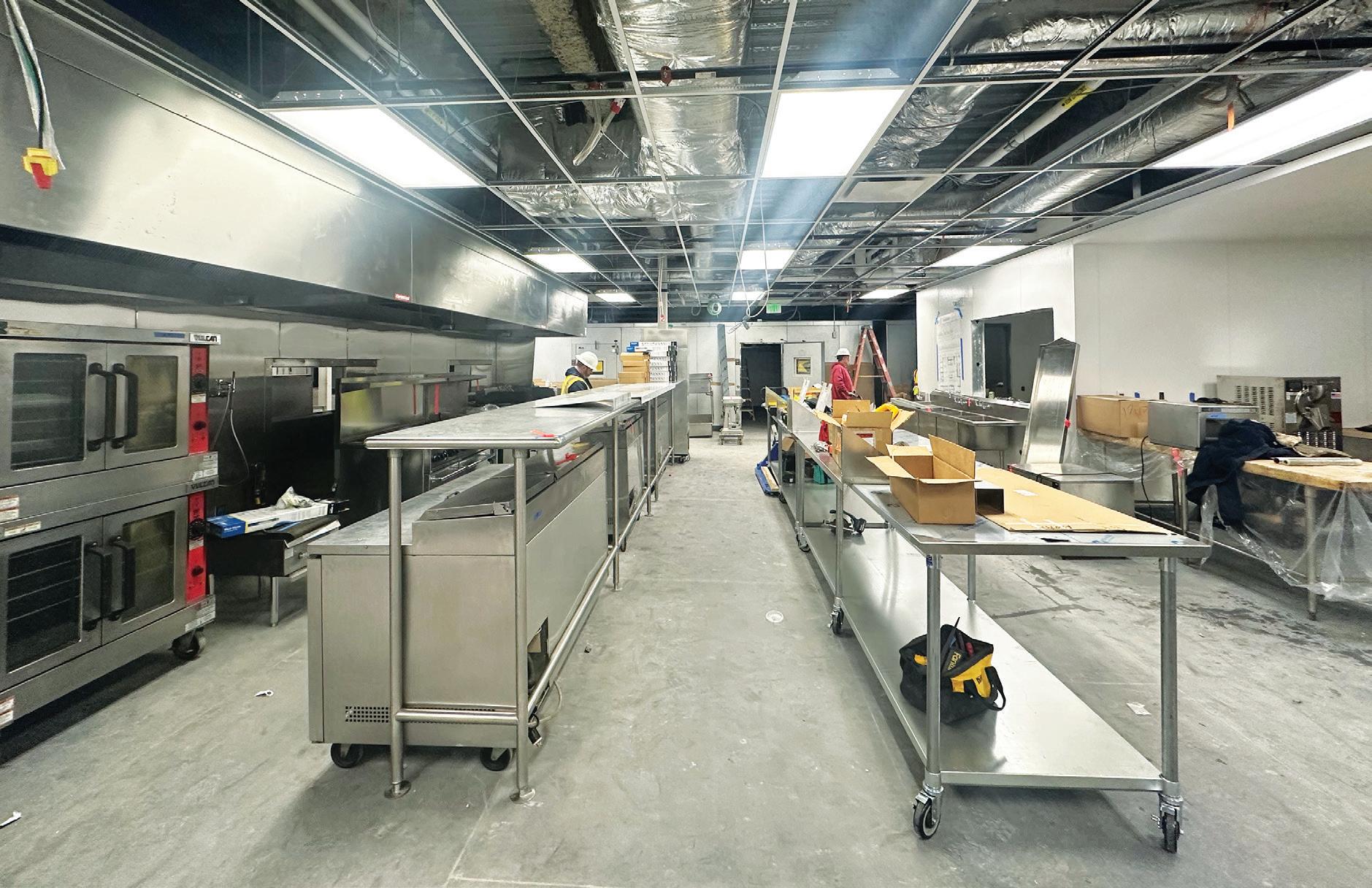

to visit outside of the club’s primary season, therefore increasing revenue by 25-30% and retaining additional staff year-round.
The club’s core season is Memorial Day to Labor Day. September onward, the crowd thins, save for Christmas parties and other special functions.
“There are a lot of issues that go along with that,” notes Doug Anderson, CCM, General Manager/COO. “It’s like opening three new restaurants for five months every year, then closing them down. So we are expanding our hours of operation. It might be limited compared the summer, but we will be able to have some consistency, where we’re able to attract members who live in Raleigh or other areas that aren’t local to come down for the weekends, with the new building and the excitement around it.”
In contrast to Guthrie and many other long-tenured team members, Anderson joined Coral Bay just last year. But he’d spent the past 18 years managing clubs in Florida, and he’s overseen similar rebuilds.
“A lot of a lot of the legwork was completed before I got here,” he notes. “Chef [Guthrie] has been very involved in the kitchen design, the layout, equipment procurement. ... I’ve been doing this a long

Coral Bay Club’s culinary team (pictured above, along with GM/COO Doug Anderson), led by Executive Chef Geneveive Guthrie, has been involved throughout the process in ensuring the new kitchen is optimized for flow and efficiency.

time, and I have never worked with a chef that has seen the big picture as much as she does. It’s not just about the culinary department; she’s conscious of how everything affects other departments as well. I’ve been extremely impressed.”
Last summer, sans kitchen, Guthrie and her team worked with the local community college to host functions out of their culinary building and to use their kitchen as a commissary for an onsite, 28-foot trailer.
“While construction was going on, we still had our pool open and served membership food out of the trailer,” says Guthrie, “and a couple nights a week, we would do bingo or a seafood buffet for the membership out of the culinary school.”
Off-season, she’s been updating her team with construction progress, involving them in the process in any way she can.
“This has definitely been an eye-opening, learning experience for me. ... But it needs to be a learning experience for everybody, not just myself,” she says. “I love hearing their opinions; I’m not the only one who will be working in this space.”
“I joke that I don’t even know if our chef can cook,” says Anderson. “We’ve all been working outside of our roles. ... Chef’s doing things don’t really fall under her purview. It’s been a great experience; but we’re ready to get into the building again.”
The second level of the new, two-story clubhouse will feature craft bar, Bar 1958.
“We have a very large, oval bar with a deck outside, so our membership can have a nice cocktail, either inside or outside, and be able to see the beautiful ocean and
beach,” says Guthrie.
In the future, a small kitchen next to the bar will enable it to serve food, too.
“It’s not going to be a full-on dinner menu; it’s going to be charcuterie boards, tapas, small plates—things like that,” Anderson says.
The new building will also host a dedicated fitness space—something that was not in the original renovation plan—as well as a card room, a larger ballroom with a separate entrance, and new locker rooms.
“The flow of traffic is going to be much more efficient, as far as staff getting food and beverage to members, as well as members getting to and from the different areas of the clubhouse without interrupting other areas,” says Anderson.
The new kitchen, too, is optimized with efficiency and flow top of mind.

“Space [was a major issue], especially in the old casual dining kitchen,” says Guthrie. “You could not have two people backto-back on the expo side of the line, which made things difficult. In the new kitchen, we will not have that problem.”
In fact, the new kitchen will have about the same footprint as the older two kitchens combined, and it’s dual-line: a la carte on one side, banquet on the other.
“The older, main banquet kitchen—I loved that kitchen, but it was aged,” notes Guthrie. “We’re doubling the equipment we have there, so we’ll be able to pump out more food, especially for our big banquets like Easter and Thanksgiving. Easter, for example, we do around over 700, so the chefs and I would have to come up with a scheduling plan for when we’d cook everything; we just did not have the space otherwise.”
Guthrie and her team took inventory of the existing equipment, deciding what could be salvaged, then determining any equipment that needed to be purchase.
“I’m super excited to have a combitherm for the first time,” she says. “We also brought in a [deck oven] for flatbread pizzas. We are trying to take over all ice cream production, from one scoop at the end of dinner service or ice cream for up to 400 for our bingo buffet. We plan on making all that in-house. We’re trying to start a fresh bread program. And then the usual equipment as well, which will
Coral Bay Club’s original clubhouse was leveled in 2023. The new building, set to open later this spring, will have two levels, a brand-new bar with panoramic views, a fitness space, new locker rooms, and a modernized, centralized, dual-line kitchen.

be nice, especially around Thanksgiving. Before, we only had four ovens to cook about 24 turkeys. Now we’ve doubled, if not tripled, that.”
Guthrie advises other chefs embarking on a renovation or rebuild to do their research and make sure they’re keeping track of everything that’s going on day to day.
“My advice” Anderson adds: “Start early, and take your time to get everything planned. And advice for boards: Get operations people involved. ... That makes for a successful project—having the people who have boots on the ground involved with the decision-making. Our President [Sam Sugg], the Board and Building committee
have been awesome in that regard. They kept the staff involved from the start. That is the way it should work.”
Ultimately, Guthrie says, communication is key, especially in a project of this size, “and there can never be too much of it. Everyone involved has done a great job in that regard, and I’m confident we will continue to do so.”
With construction winding down and equipment being installed, she’s eager to return to the kitchen: “my happy place,” she says, “where I can work alongside the team and bring joy to our members with our food. That’s where I feel most energized and in my element.” C+RB
Every great round of golf begins on the tee box. Help your members and guests get off to the perfect start by furnishing your course with products from Landmark. Every item is custom-built, whether you choose our beautifully sturdy Rinowood™ or highly sustainable EasyCare™ material.

Accurately display hole layouts to golfers before they even set foot in the tee box. Choose from a variety of shape, mounting, and color options—and we’ll do the rest. Available in Rinowood, EasyCare, Cast Bronze, Cast Aluminum, and more.
Designed for high visibility and weather resistance, our markers provide lasting performance and functionality. Available in Rinowood, EasyCare, Cast Bronze, Cast Aluminum, and more.
Give players convenient spots to wash dirt and grime off their golf balls on each hole. Different configurations and colors are available to choose from.



Scan to start customizing—and tell your Landmark Account Manager you saw this ad
When it comes to eye-catching eats, the proof is in the pastry.
Pamela Brill • Contributing Editor
IT DOESN’T TAKE MUCH convincing to sample sweet treats at the buffet table these days (New Year’s resolutions, be damned). But when chefs start dreaming up their next great pastry recipe for the buffet table, they strive to deliver inventive flavor pairings in eye-catching presentations with broad appeal. Here’s how some pastry professionals are getting members up from their seats and over to the buffet to find out what all the fuss is about.
Creating crowd-pleasing pastries is almost like child’s play—especially when those desserts evoke flavors of the past. Members at Lake Nona Golf & Country Club in Orlando, Fla., were treated to this type of culinary experience when Executive Pastry Chef Andrea McCollum crafted two special dishes for a recent Flapjacks & Flannels Family Night.
“When developing the menu, I wanted to ensure the savory and sweet items were cohesive,” says McCollum. “I also take into consideration our members’ current tastes and curate it to their preferences.”
For this breakfast-themed menu, McCollum designed a cereal milk panna cotta, starring Fruity Peebles (chosen for its gluten-free, yet sweet flavor) soaked
in heavy cream for 10 minutes. She then followed a standard panna cotta recipe, reducing the sugar and allowing it to set. The dessert was topped off with housemade Fruity Rice Krispies, cut into strips and rolled into spiral shapes.
“Out of all of our items on the buffet that day, this one was our most popular, probably due to kids liking the color and the adults receiving a sense of nostalgia from the cereal itself,” notes McCollum.
Another buffet selection that married competing tastes were maple bacon cookies.
“Given our members are such fans of our cookie varieties, we took one of our existing recipes and modified it by substituting some of the sugar for maple syrup and some of the butter for bacon fat, as well as increasing the flour slightly to account for the additional fat the bacon would add to the batter,” explains McCollum. A maple glaze drizzled on top added yet another layer to this unexpected delight.
McCollum firmly believes in incorporating a variety of textures when crafting pastries for the buffet table. Rather than establishing one centerpiece, multiple points of interest prompt guests to check out the entire spread and linger longer. Speaking of the element of time, it remains one of McCollum’s biggest chal-
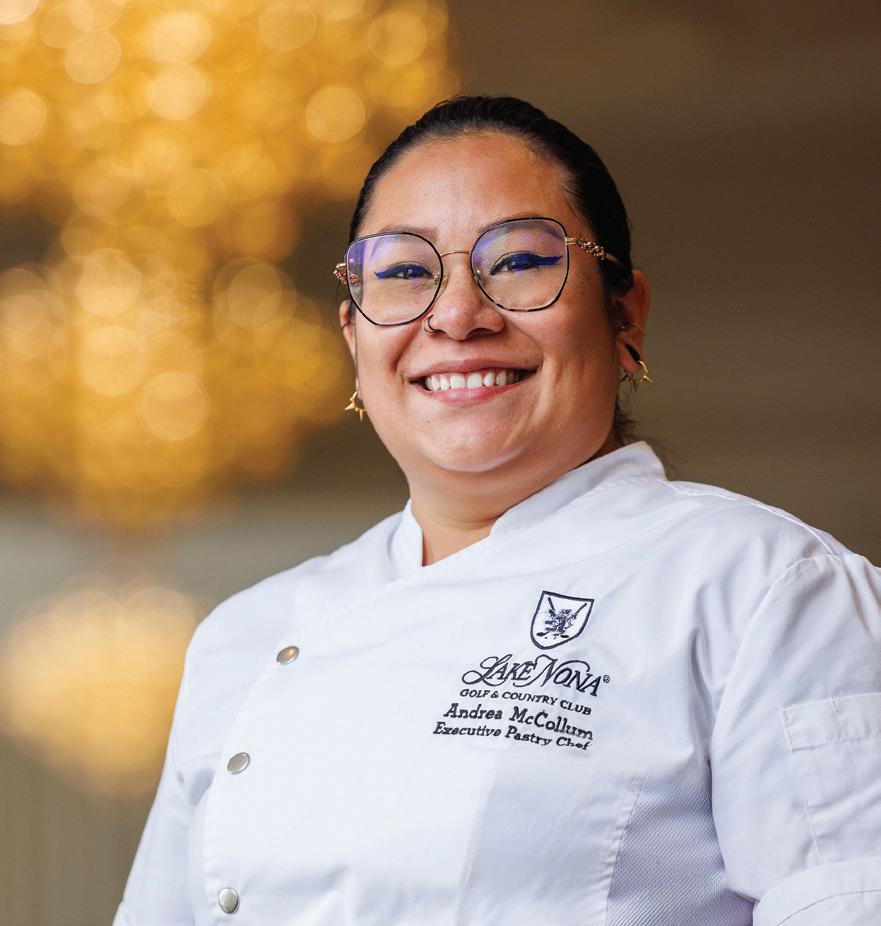
Executive Pastry Chef Andre McCollum is known at Lake Nona G&CC for her stunning presentations and her keen ability to craft delicious, sometimes unexpected and nostalgic, flavor pairings, such as her cereal milk panna cotta or her maple bacon cookies.
lenges—not having enough hours to plan out a complex menu. However, it also has an upside, prompting the culinary team to kick their plans into high gear.
“By allowing for a short time constraint, we have the opportunity to have a clear mindset and overall goal, as opposed to us overthinking our initial plan,” she notes.
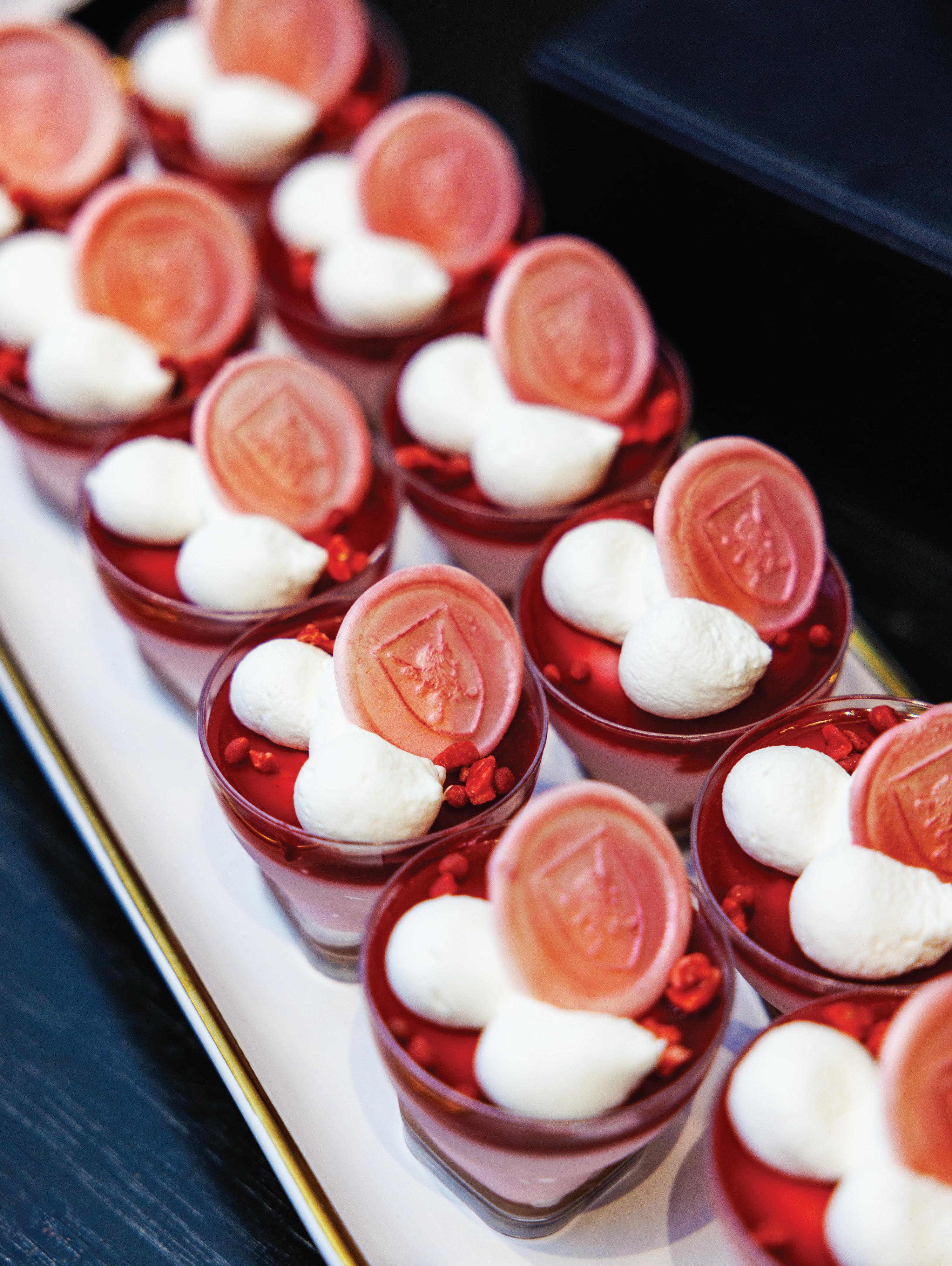
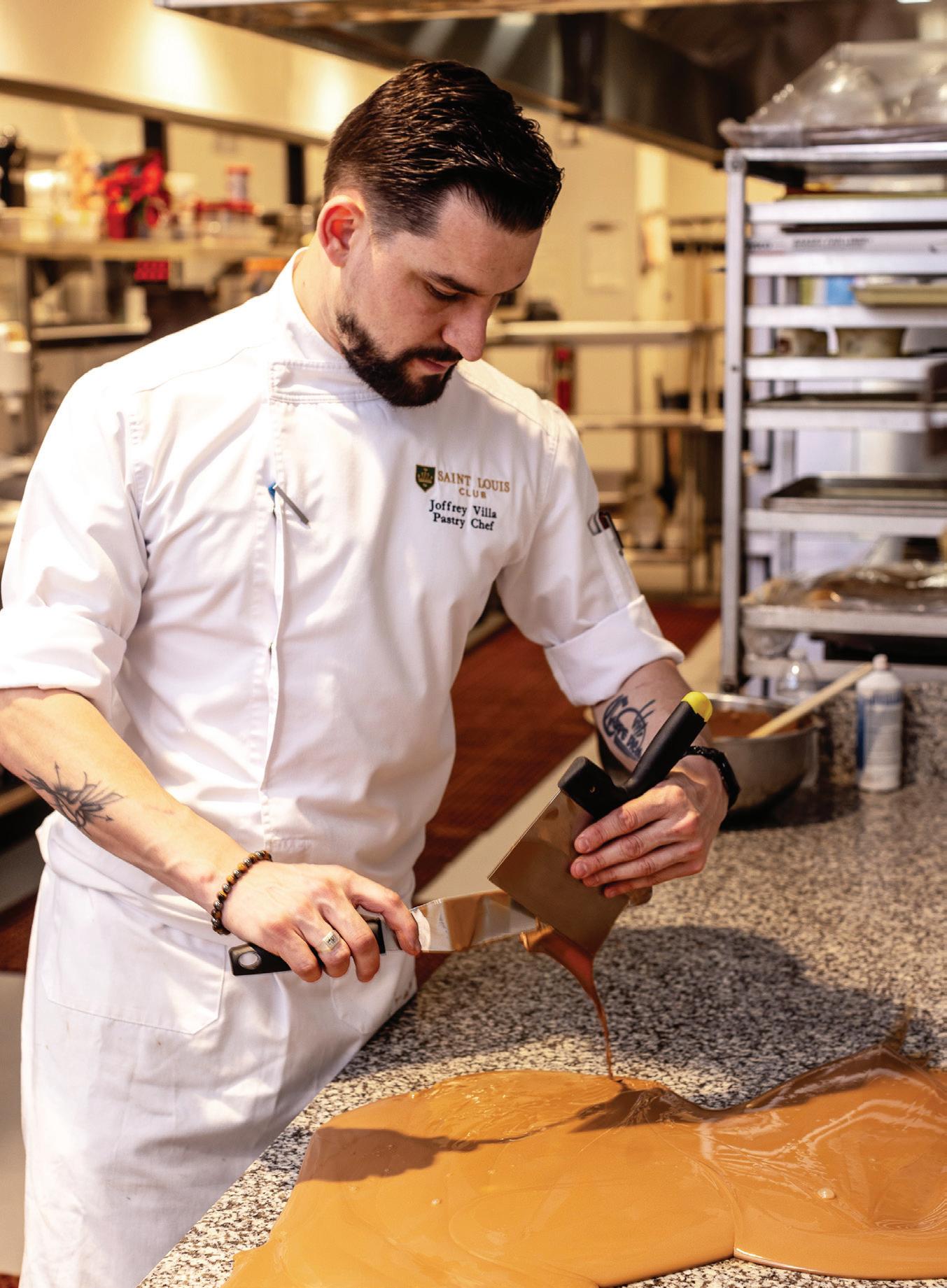

and other pastries—something for everyone, in a range of styles and flavors. To draw members,
This mentality may come in handy later this season when McCollum makes another mashup of two member favorites: a carrot cake cheesecake. She plans to par-bake a carrot cake in molds about halfway through, place a cheesecake mix on top and then finish by baking them both.
For events at the Saint Louis Club in Clayton, Mo., Executive Pastry Chef Joffrey Villa typically makes 8-16 different cakes and other pastries that reflect a range of styles and flavors.
“I want my buffet to have lots of choices,” he says, “and everything needs to be appealing.”
The Saint Louis Club marks Villa’s first foray into the private club sector, honing his skills from past gigs at pastry shops in France and fine dining establishments all over the world. His varied background informs his preference for sweet and light desserts. On his buffet table, guests can expect to find French classics like crème brulee, creme caramel, Forêt Noire or Paris-Brest, along with traditional cheesecake, carrot cake and chocolate cake.
(Those with dietary restrictions need not fear, as he also includes gluten- and nutfree options.)
In his efforts to capture one’s attention, Villa does not downplay the allure of the non-edible centerpiece.
“Our florist will make a beautiful floral piece, or we have an ice sculpture for the
Find the full recipe for Saint Louis Club Executive Pastry Chef Joffrey Villa’s pistachio opera cake (pictured) at recipes.clubandresortchef.com.
theme of the buffet or holiday,” he notes. “The dessert needs to be eye-catching first with decoration … that will bring the member close enough for them to reach for a spoon and a plate.”
His tower of mini pastries and chocolate fountains have also proven to be effective draws to the buffet table.


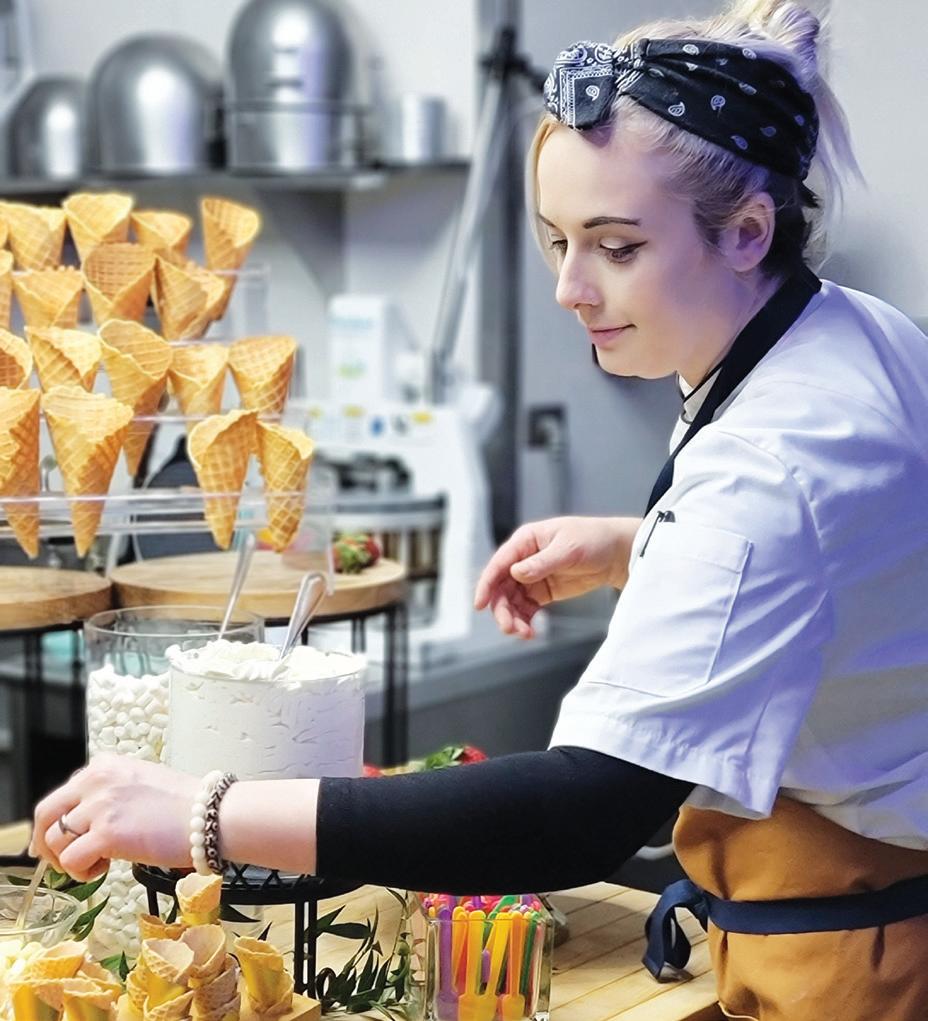
The CC of Virginia Executive Pastry Chef Jessica Rose Quiet (above), part of C+RC’s 2025 class of 40 Under 40, believes a showstopping pastry buffet centerpiece needs height, contrast, and a clear theme. Thoughtful lighting, intentional spacing, and interactive elements also make for a memorable member experience.
Members at The Country Club of Virginia in Richmond are milling over the latest pastries featured on the buffet table. During a recent event, one bite of the s’mores ganache tarts sent them on a trip down memory lane.
“I made [the tarts] with a house-made meringue and locally sourced Virginia raw honey, drizzled them with a dark chocolate ganache and then topped them with graham cracker crumbs,” ex-
The CC of Virginia Executive Pastry Chef Jessica Rose Quiet’s key lime profiteroles (left), were served with a pink guava sauce in individual pipettes and topped with a torched meringue smoked with hickory wood. Her crème brûlée macarons (below) feature a buttercream filling. Find the full recipe at recipes.clubandresortchef.com.

plains Executive Pastry Chef Jessica Rose Quiet. Another one of her creations, key lime profiteroles, were served with a pink guava sauce in individual pipettes and topped with a torched meringue smoked with hickory wood. “The unique flavors sparked a lot of buzz, and it became such a great conversation starter,” she says.
Quiet has hit the ground running since she joined the club’s culinary team last December. Harnessing her previous pastry-making experience at the Ocean House in Watch Hill, R.I., and the Club at Spruce Peak in Stowe, Vt., she has developed a keen eye for designing highcaliber pastries for members and guests.
“A showstopping pastry buffet centerpiece needs height, contrast and a clear theme,” says Quiet. She has found success with themed chocolate centerpieces or sculpted cakes to create a focal point and relies on different vessels, such as
glass jars, acrylic risers and cake stands, to add depth. “Thoughtful lighting, intentional spacing and interactive elements make the display warm and inviting, creating a memorable experience for members,” she adds.
This season, Quiet’s menu innovations will reach new heights—quite literally. The club’s Easter display will feature a custom donut wall featuring eight varieties, a grand-scale chocolate centerpiece and large chocolate eggs for which Quiet will challenge her pastry chefs to design. For Mother’s Day, members will be treated to hanging strawberry trees, adorned by freshly dipped strawberries in a medley of colored chocolates.
“Using ornament hooks, I’ll hang each one on the trees for a fun and beautiful touch,” Quiet says. “It’s going to be a beautiful spring, with lots of sweet surprises.” C+RB
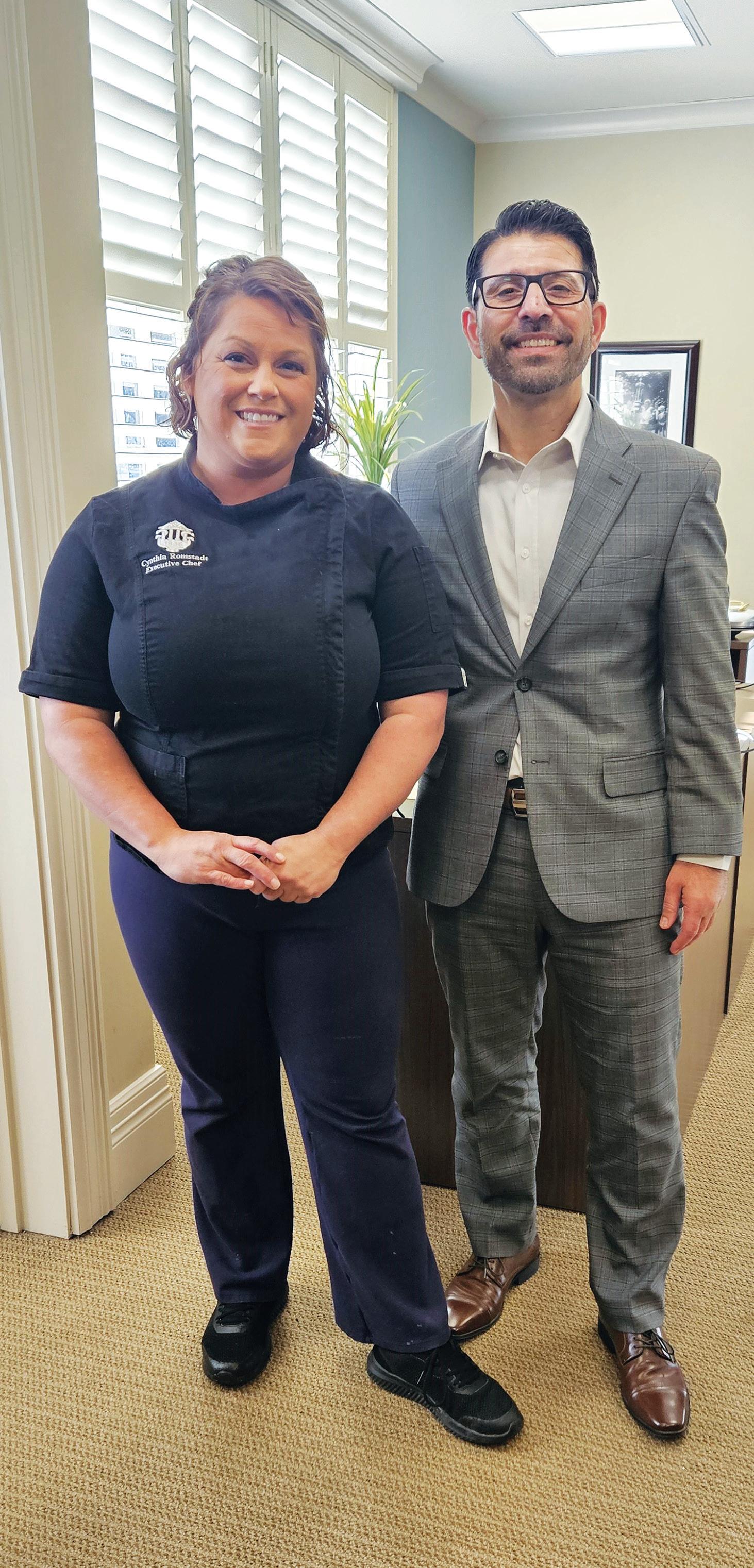
GM/COO Frank Cordeiro explains how culinary has evolved under Executive Chef Cynthia Romstadt—and shares F&B goals for the club’s ongoing $100 million capital improvement plan.
By Isabelle Gustafson • Senior Editor
AS PART OF COLONIAL COUNTRY CLUB’S $100 million capital improvement plan, the Fort Worth, Texas, club is introducing two brand-new dining experiences, led by Executive Chef Cynthia Romstadt, which General Manager and COO Frank Cordeiro expects will increase F&B revenue by at least a third.
“Annual F&B revenue will be $5.5 million this year,” he notes. “Since 2020, we’ve seen 10%-20% year-over-year increases. With the renovation, we’re adding about a third to the overall capacity.”
Cordeiro joined Colonial CC about four years ago. In the 30 years he’s been in the industry, club culinary has evolved significantly.
“When I started my career in the industry, dining was very formal. Sometimes people confuse formal with quality,” he notes. “Formality has declined, but expectations have increased.”
The new casual grill, named Leonard’s after the club’s founder, Marvin Leonard, will feature an exhibition kitchen and indoor/ outdoor dining and bars. The focus will be on fresh, housemade foods like pizzas and pastas, all centered around crafting fun, family-friendly, community-focused experiences for members.
The club will also introduce a more upscale dining experience called Hawk’s Landing, which will feature panoramic views of the city.
“It will feature a chef’s counter, exhibition kitchen, and a cold bar, where we’ll offer sushi, sashimi, oysters and more—again, featuring the finest ingredients and experiences,” Cordeiro says. “The kitchen flows seamlessly into the dining room, where members can see and experience the culinary team at work. We’ll be dry-aging our own meats, making our own sausages, making pastas from scratch—a true quality and chef-driven dining experience.”
C+RC: Can you talk about Chef Romstadt’s involvement in the renovation?
Frank Cordeiro (FC): The entire process has been very collaborative. We don’t have a top-down philosophy here; we work for each other, and ultimately, we work for our members.
Chef [Romstadt] and her team have been an integral part of this process, starting from the beginning, in the conceptual phase, to now, boots on the ground as construction is happening.
She and her team are working directly with our project managers, our design team, and our contractors, making sure what we’ve conceptualized is executed in the way we envision it. The concepts, the ingredients, and the menus are 100% driven by [Romstadt] and her team.
C+RC: Chef joined the club three years ago. She started as Executive Sous Chef and then became Executive Chef a year later. Can you talk a little bit about that process and why she was the right fit?
FC: When I first came on board, our Assistant General Manager, John Hurt, who oversees all clubhouse operations, said to me, “We have a very talented chef who comes to assist us with the execution of the Charles Schwab Challenge. I want you to meet her and help me convince her to join our team year-round.”
My first year here, we were unsuccessful. But, lucky for us, we convinced her to make the move to Texas the year after.
As we grew the culinary program and started to conceptualize this campus plan and the two new restaurants, we wanted to make sure we utilized her talents and continued to move her up through the organization for greater impact.
We promoted the then-Executive Chef to Director of Culinary Operations, which gave us an opportunity to promote [Romstadt] to Executive Chef. She now oversees all culinary at the club.
C+RC: How would you characterize her impact on culinary, and on her team, so far?
FC: I believe it starts with the team. She’s incredibly dedicated to her team. She gets to know what inspires them, what’s important to them. She works to ensure she is facilitating that success across the board at every level of her organization. As such, she gets the most out of them, and she enables her team to innovate and to shine.
We immediately saw how her commitment to her team manifested itself in terms of member experience, the quality of the product, and the innovation that was coming out of the kitchen. And it continues improving in exciting ways daily.
[Our founder’s] philosophy was that innovation and excellence know no completion. And we utilize that principle in everything we do. [Romstadt] has full rein to change whatever she wants, whenever she wants. She can source ingredients at will. There are no restrictions whatsoever.
Her philosophy is, if she can find it locally, and it’s fresh, and it’s high-quality, then she’s going to source it locally. Most everything we have is sourced locally. If there’s a better product that’s not available locally, we search for the finest available elsewhere to ensure our team has the best ingredients at the disposal. It’s very much a chef-driven, ingredient-driven program.
C+RC: Chef Romstadt’s also very involved in the greater club chef community. She was on C+RC’s 2024 40 Under 40 list, for example, and she attends Chef to Chef. Can you talk about the value of that involvement for her and for the club?
FC: She’s a star. When that star is shining outside of our four walls, that’s a great benefit to our club, to our brand, for others to see her talent and her passion for this industry. It also allows her to continue to grow, to learn, and to be inspired.
It’s very easy in our industry to be consumed by the urgency of day-to-day operations. We have to make time to step outside of these four walls and reflect on what we’re doing and why we’re doing it. This makes us a stronger and better organization. We have a saying at Colonial: Excellence is the default. C+RC

Golf Course Owners
Association CEO Jay Karen discusses advocacy, tee time aggregation, and AI in golf on the Club + Resort Talks podcast.
Staff Report
ON A RECENT EPISODE of the Club + Resort Talks podcast, Rob Thomas, Editorin-Chief of Club + Resort Business, sat down with Jay Karen, CEO of the National Golf Course Owners Association (NGCOA), to discuss key industry topics ranging from advocacy efforts to Google’s entry into the tee time marketplace and the growing role of artificial intelligence (AI) in golf operations.
Karen began by providing an overview of the NGCOA’s mission, emphasizing its role in supporting golf course owners and operators through advocacy, education, and business resources. Founded in the mid-1970s, the organization initially served independent, privately owned public courses but has since expanded to include municipalities, large management groups like Invited and Troon, and thousands of golf facilities nationwide.
At the forefront of NGCOA’s efforts is government advocacy, addressing legisla-


tive and regulatory challenges that impact the business of golf. Additionally, the organization provides educational opportunities through a member magazine, online programming, and industry conferences. Another key initiative is the Smart Buy program, which offers members costsaving benefits on equipment, services, and supplies.
A major topic of discussion was Google’s foray into the online tee time booking space. Karen recounted how, in 2023, thousands of golf courses using an online booking service discovered a new “Book Online” button on their business profile pages, directing users to the listings without prior notice to course owners.
Recognizing the potential impact, NGCOA engaged with Google and collaborated with leading golf management software providers to ensure these booking links could connect directly to courseowned platforms. “Several providers have now successfully integrated this feature,”
Karen said, “allowing golfers to book tee times directly with the course rather than being funneled through third-party platforms.”
Karen envisions Google evolving into a comprehensive tee time search engine, akin to how it aggregates hotel and airline bookings. While this shift could create new opportunities for golf course operators, it also raises questions about competition and market control.
Karen also addressed the ongoing debate surrounding third-party tee time platforms. While these aggregators have provided exposure and additional booking channels, their business model—particularly the barter-based system—has been a source of concern.
“The biggest issue,” Karen explained, “is price abdication. When golf courses trade tee times in exchange for marketing and software, they often lose control over pricing. Discounted ‘hot deals’ can condition golfers to expect bargain rates,

undermining the course’s ability to maintain pricing integrity.”
Additionally, third-party providers often retain customer data, preventing golf courses from establishing direct relationships with players. “Some operators are realizing that in today’s high-demand environment, they don’t need to rely on third-party platforms,” Karen noted. “Many are taking back control of their booking channels and customer interactions.”
As the conversation turned to AI, Karen highlighted its growing influence in the golf industry. AI-powered tools are already being used for dynamic pricing, automated customer service, and operational efficiencies.
“One area where AI is making a big impact is in tee time booking,” he said. “We’re seeing AI-driven voice assistants handling reservations, which frees up staff and improves efficiency. AI can also analyze booking trends and suggest optimal pricing strategies to maximize revenue.”
“The biggest issue,” Karen explained, “is price abdication. When golf courses trade tee times in exchange for marketing and software, they often lose control over pricing. Discounted ‘hot deals’ can condition golfers to expect bargain rates, undermining the course’s ability to maintain pricing integrity.”
Beyond reservations, AI is playing a role in turf management, with predictive analytics helping superintendents optimize maintenance schedules based on weather patterns and course conditions.
While AI presents exciting possibilities, Karen cautioned that golf course owners and operators must stay informed about potential pitfalls, including data privacy concerns and the need for human oversight in decision-making.
As the golf industry continues to evolve, NGCOA remains committed to advocat-
ing for course owners, ensuring they have the tools and resources needed to thrive. Whether addressing policy issues, reshaping tee time distribution models, or navigating technological advancements, the organization plays a critical role in shaping the future of golf course management. With Google’s increasing presence, shifting dynamics in third-party tee time aggregation, and the rise of AI-driven efficiencies, today’s golf course operators must stay agile and informed. Thanks to industry leaders like NGCOA and voices like Jay Karen, they have a strong ally in navigating these changes.
What role will technology play in enhancing the member experience and driving engagement, and what specific technologies do you see becoming more prevalent?

“At Island Country Club, technology plays a key role in enhancing the member experience and increasing engagement. Our mobile app, integrated with our website, allows members to easily stay updated on events, make dining reservations, and book golf tee times or tennis courts. On March 18, the app received an update that offers a more modern, organized look. One key improvement addresses the challenge of ensuring that all members have quick mobile access to reservation details, including the restaurant, time, and attendees. With features like push notifications and Face ID login, we streamline member interaction and eliminate log-in issues. Additionally, as AI becomes more prevalent, we make it a priority to stay informed about the latest advancements and how they can improve our member experience.”
LAUREN MOSTAK I COMMUNICATION AND MEMBERSHIP SERVICES COORDINATOR
ISLAND COUNTRY CLUB I MARCO ISLAND, FLA.
“Technology is no longer just a tool but a bridge connecting clubs with their members in a more dynamic and personalized way. Mobile-first engagement will be key—apps that integrate event bookings, seamless communication, and exclusive content will enhance the member experience. AI-driven personalization will also become more prevalent, allowing clubs to tailor recommendations, content, and experiences to different member demographics. Additionally, storytelling through digital platforms—whether via personalized content, interactive club histories, or curated member experiences—will deepen engagement and strengthen the sense of belonging—whether via personalized content, interactive club histories, or curated member. “
AMIR ZINATI, MA/MBA I MARKETING & COMMUNICATIONS MANAGER
ROYAL VANCOUVER YACHT CLUB I VANCOUVER BC


“Over the years, the role that technology has played in the membership experience has greatly increased. What once started as the ability to have online member records, e-mails, and websites, is now onto mobile experiences, automation, personalization and data-driven insights. Clubs that embrace user-friendly and personalized technology allow the operations teams to work more efficiently while promoting loyalty between the club and the member. So, what’s next?
The three up-and-coming technologies that I see becoming more prevalent are digital communications platforms, AI, and Virtual and Augmented Reality (AR/VR). While all three have started to make their mark on the industry, I think the best is yet to come.“
BETHANY ACKERMAN I DIRECTOR OF MEMBERSHIP AND COMMUNICATIONS REHOBOTH BEACH COUNTRY CLUB I REHOBOTH BEACH, DEL.


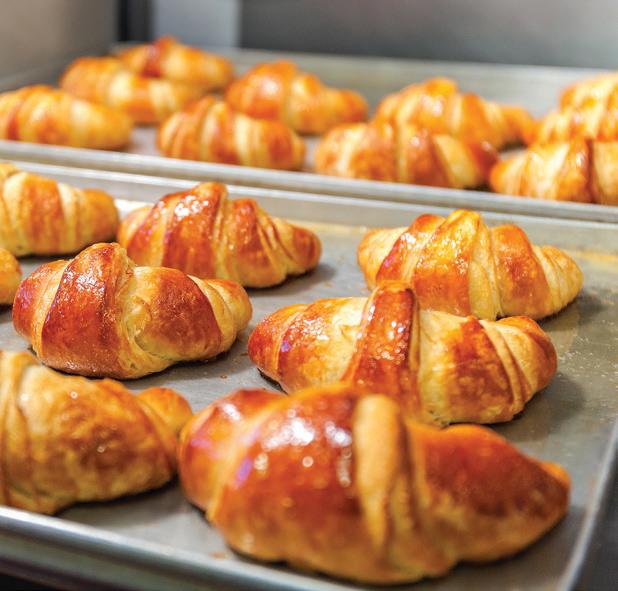


● Preheats to 350° less than 10 min.
● Roast, cook, bake, air fry, rethermalize and hold with precise temperature and humidity control.
● Allows end user flexibility to increase or reduce air flow.
● In both 12KW & 8KW versions. Full & half size available!
● Non-venting; does not require a hood. (*Check your local codes)

